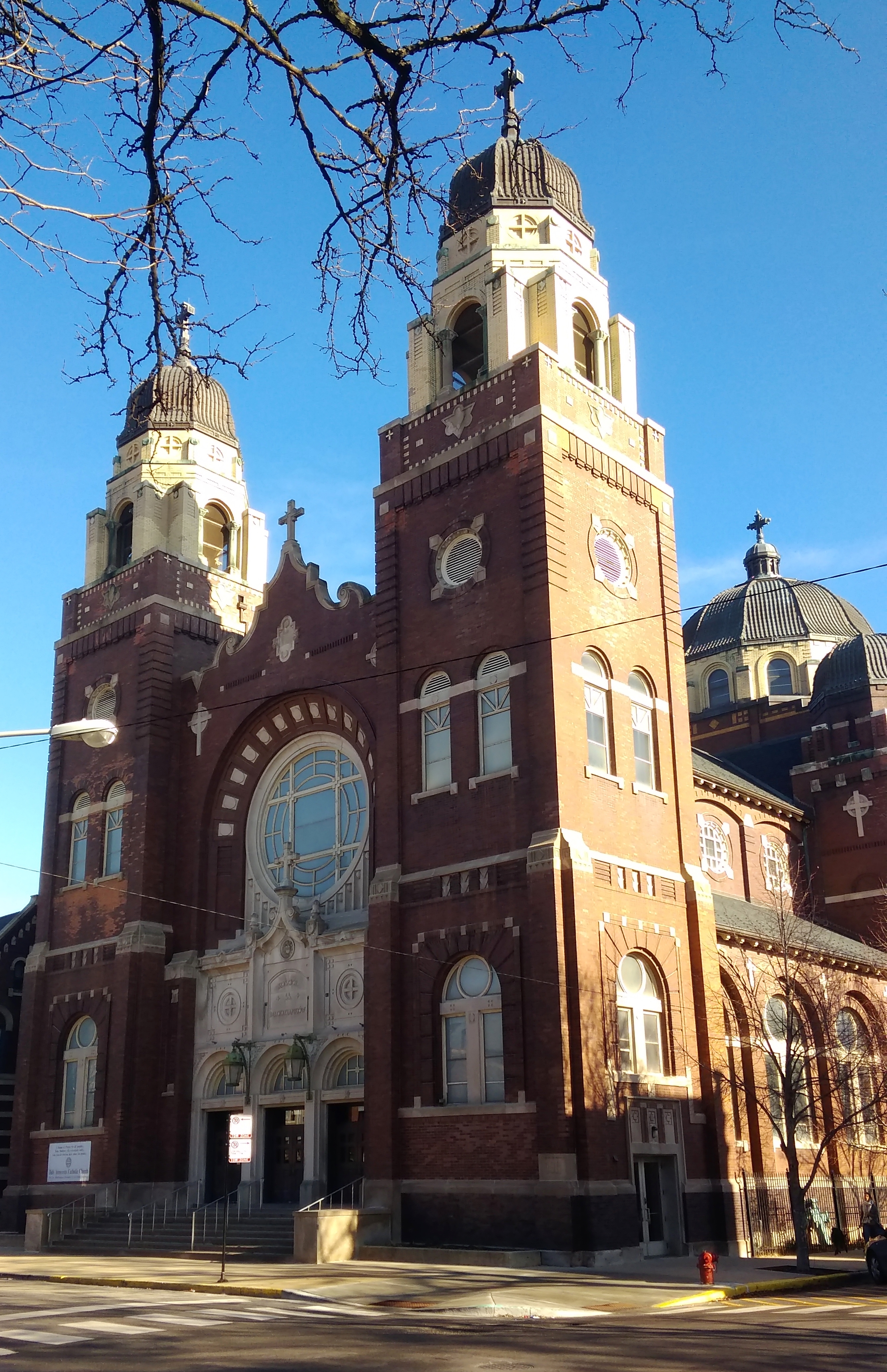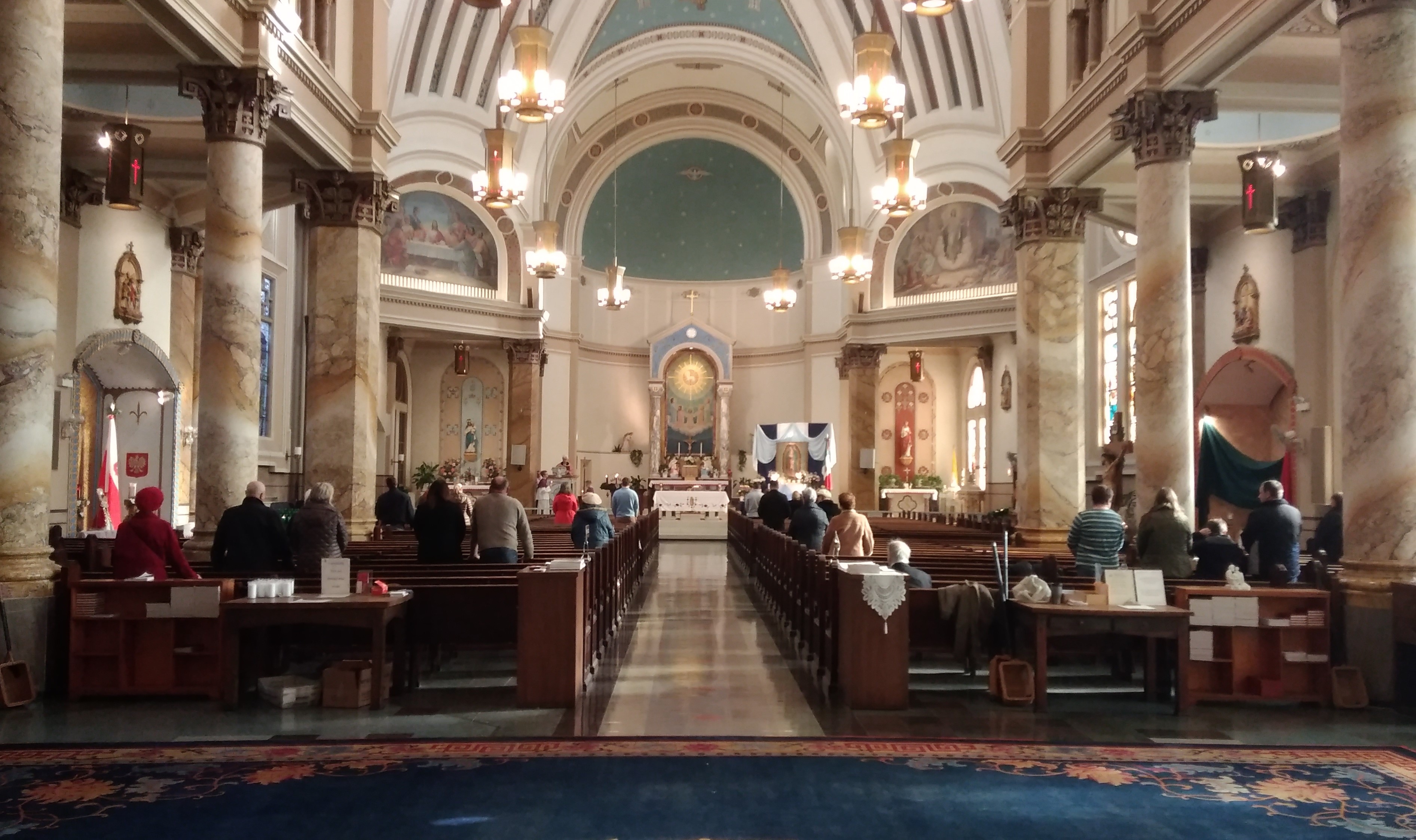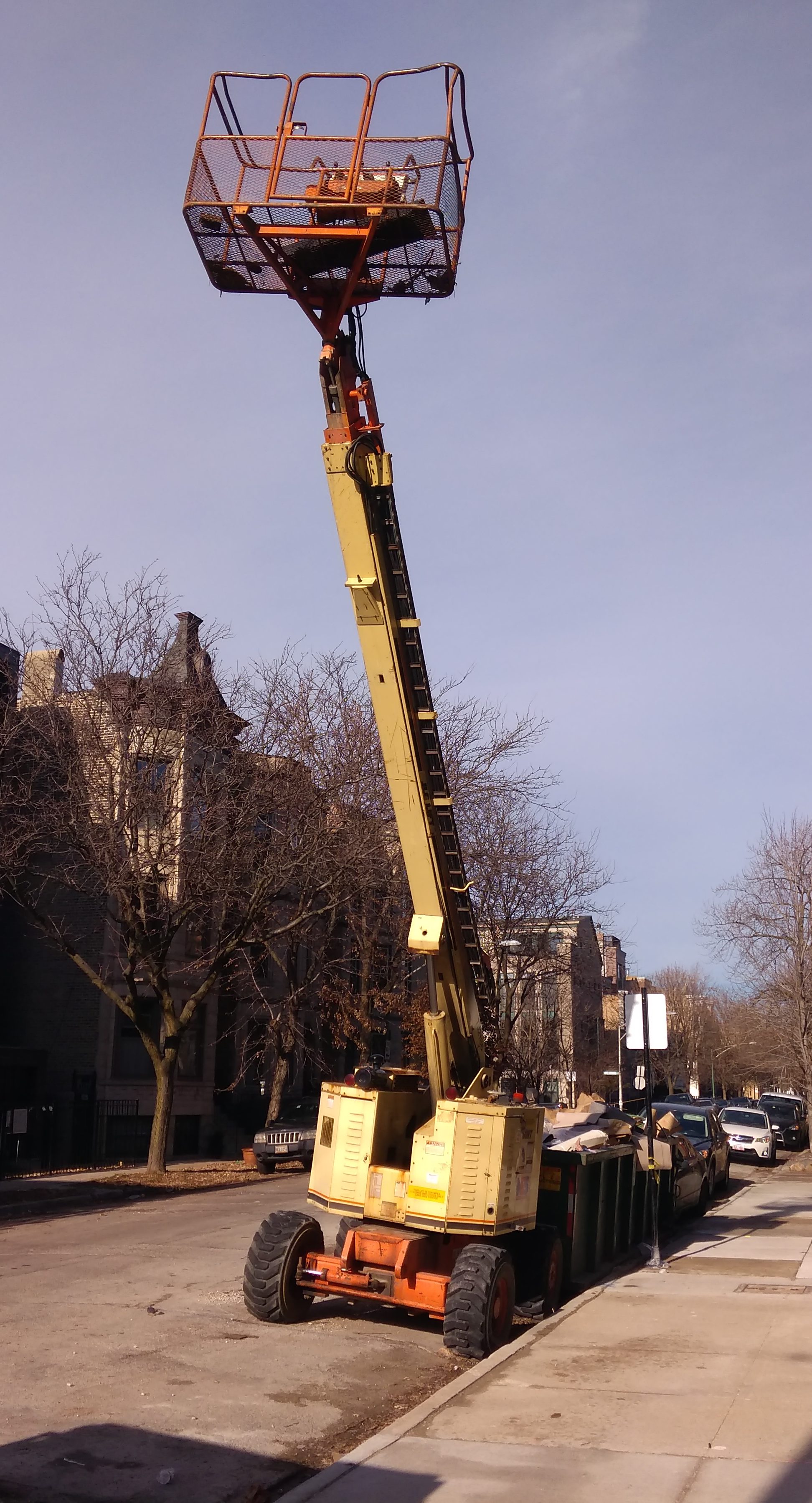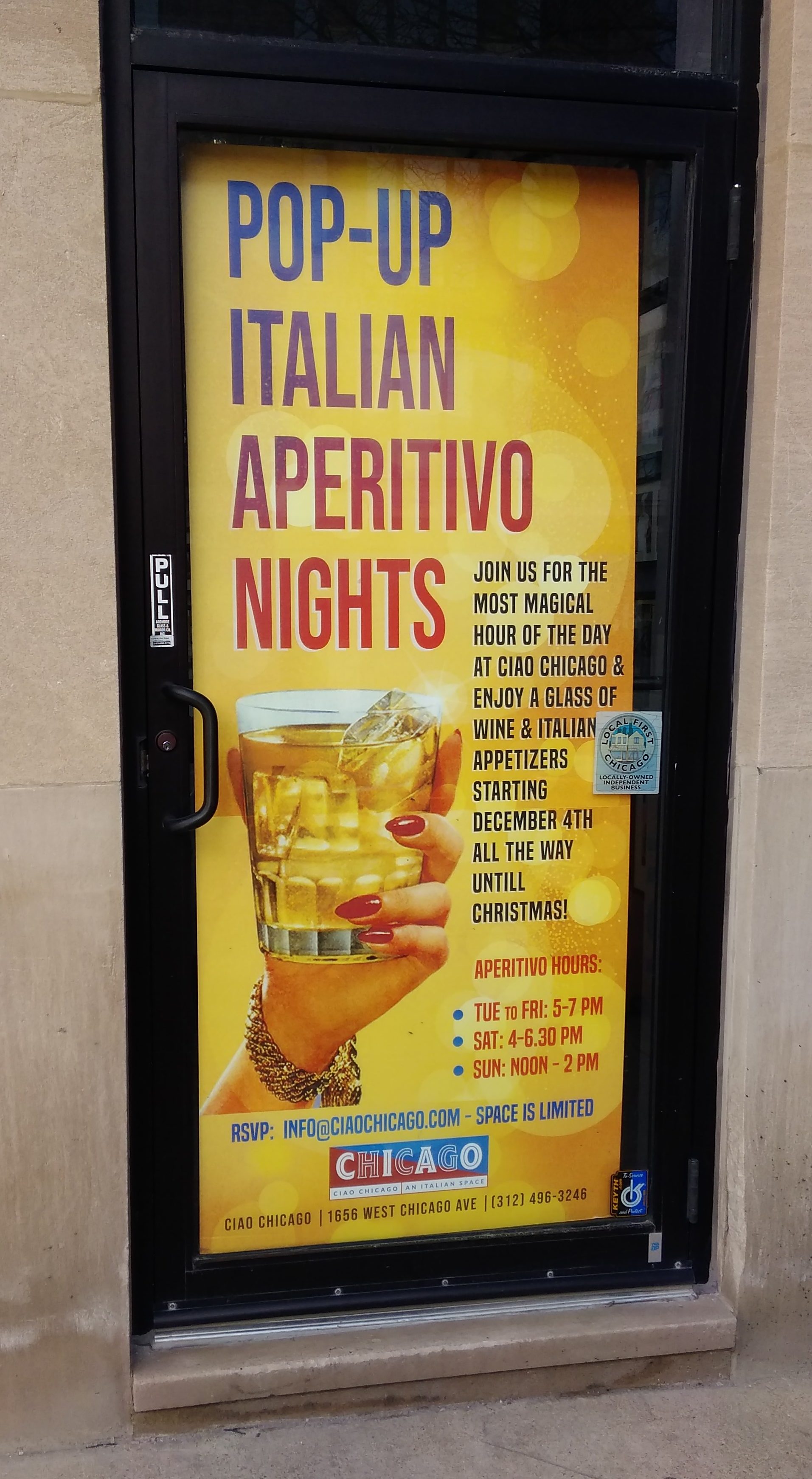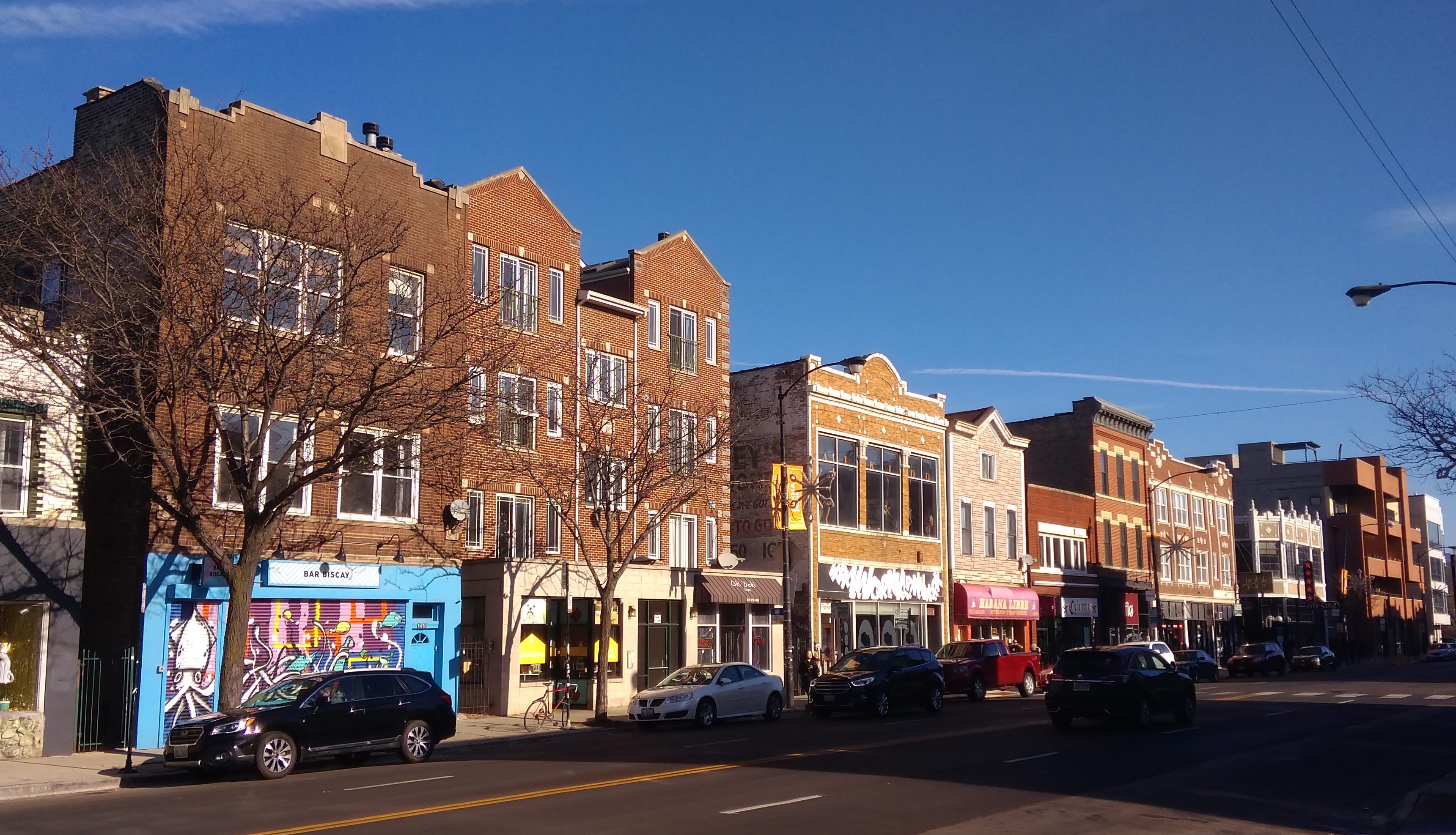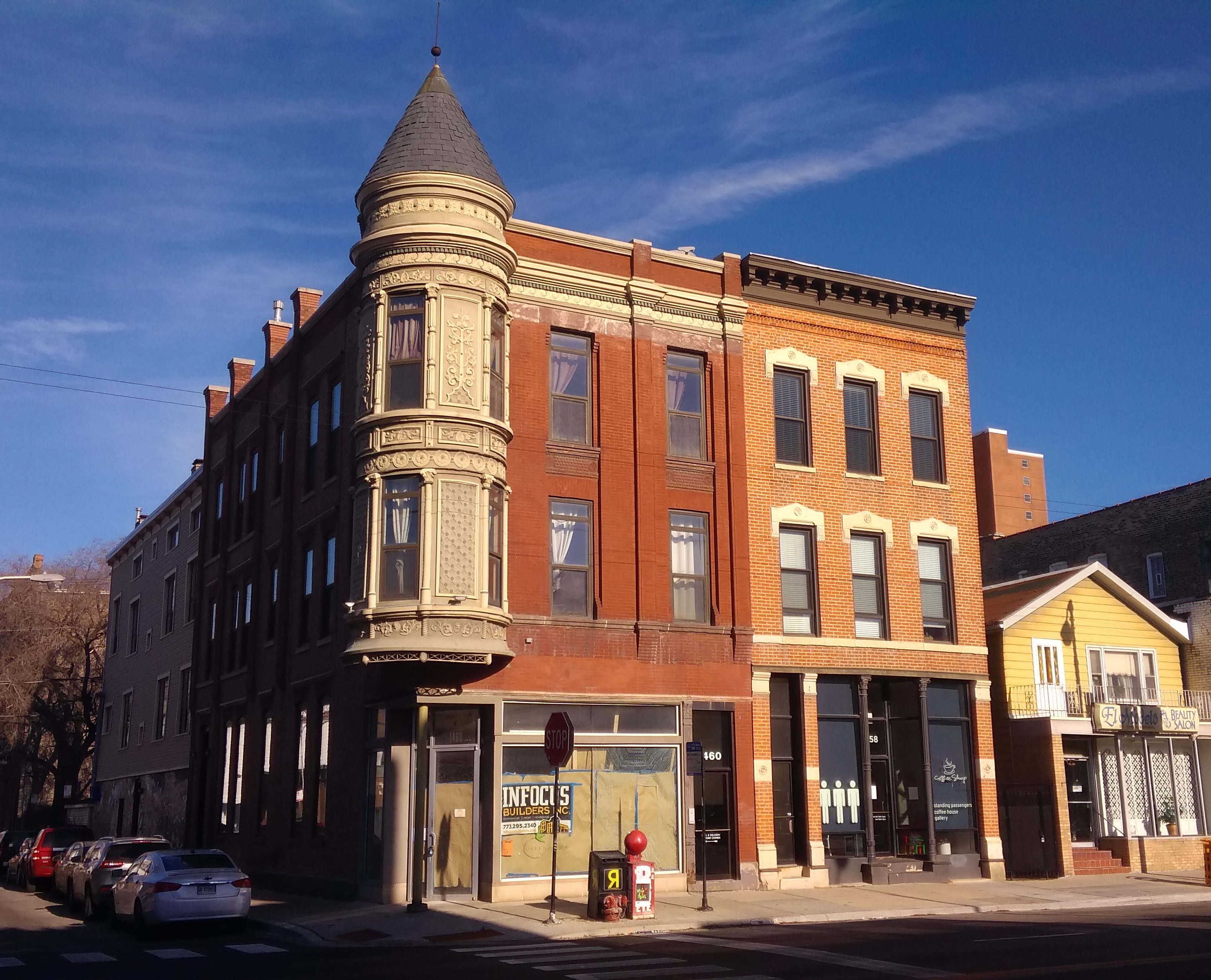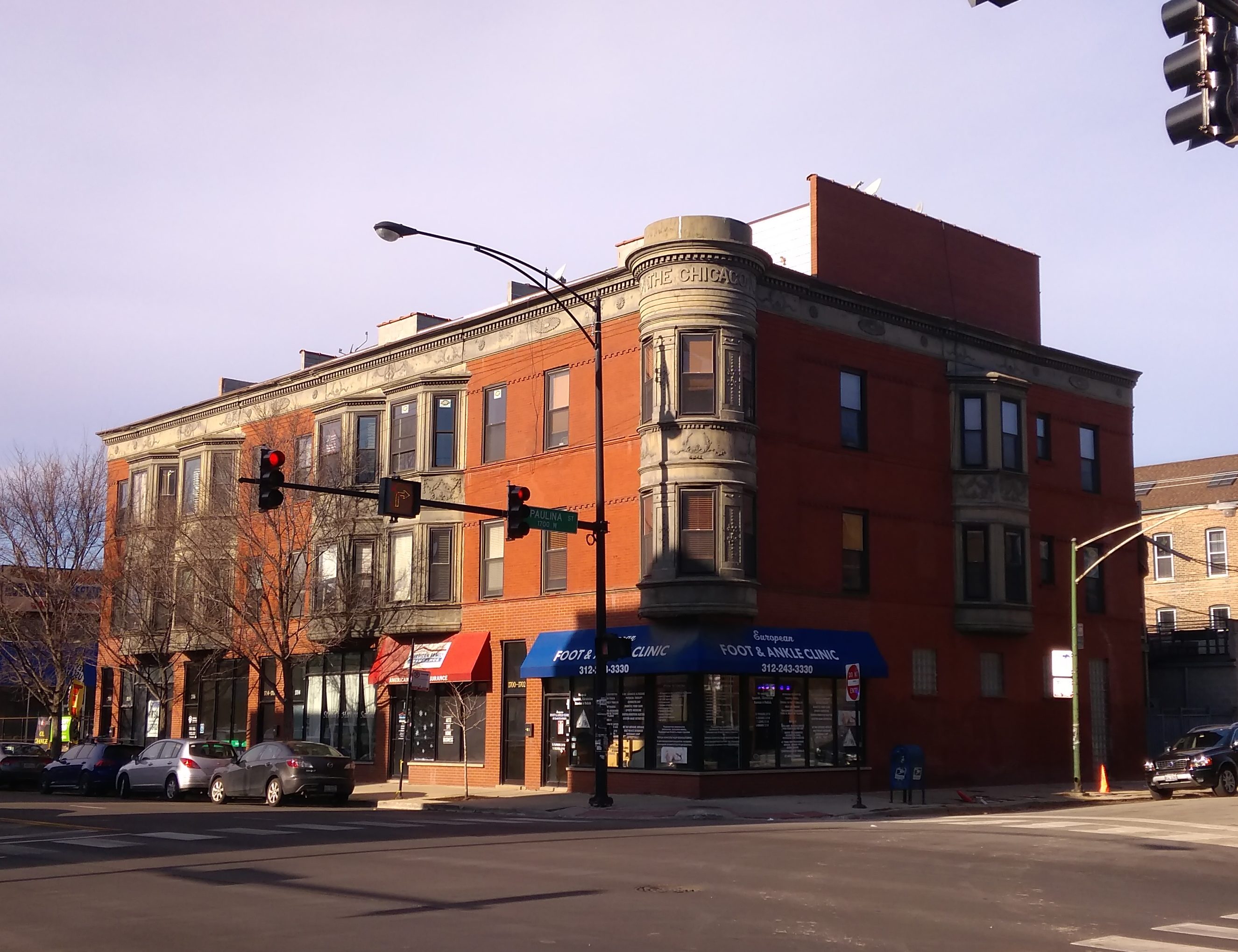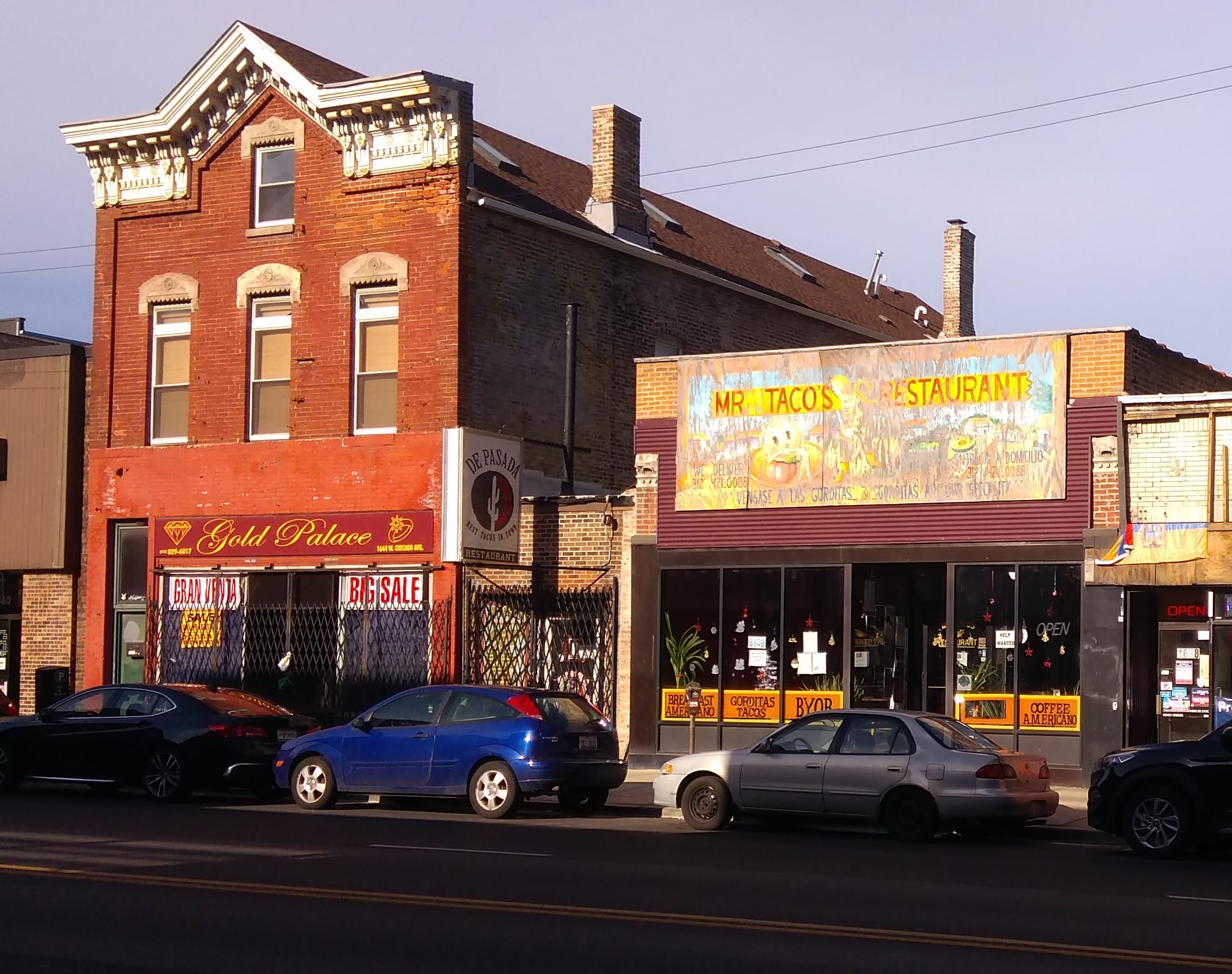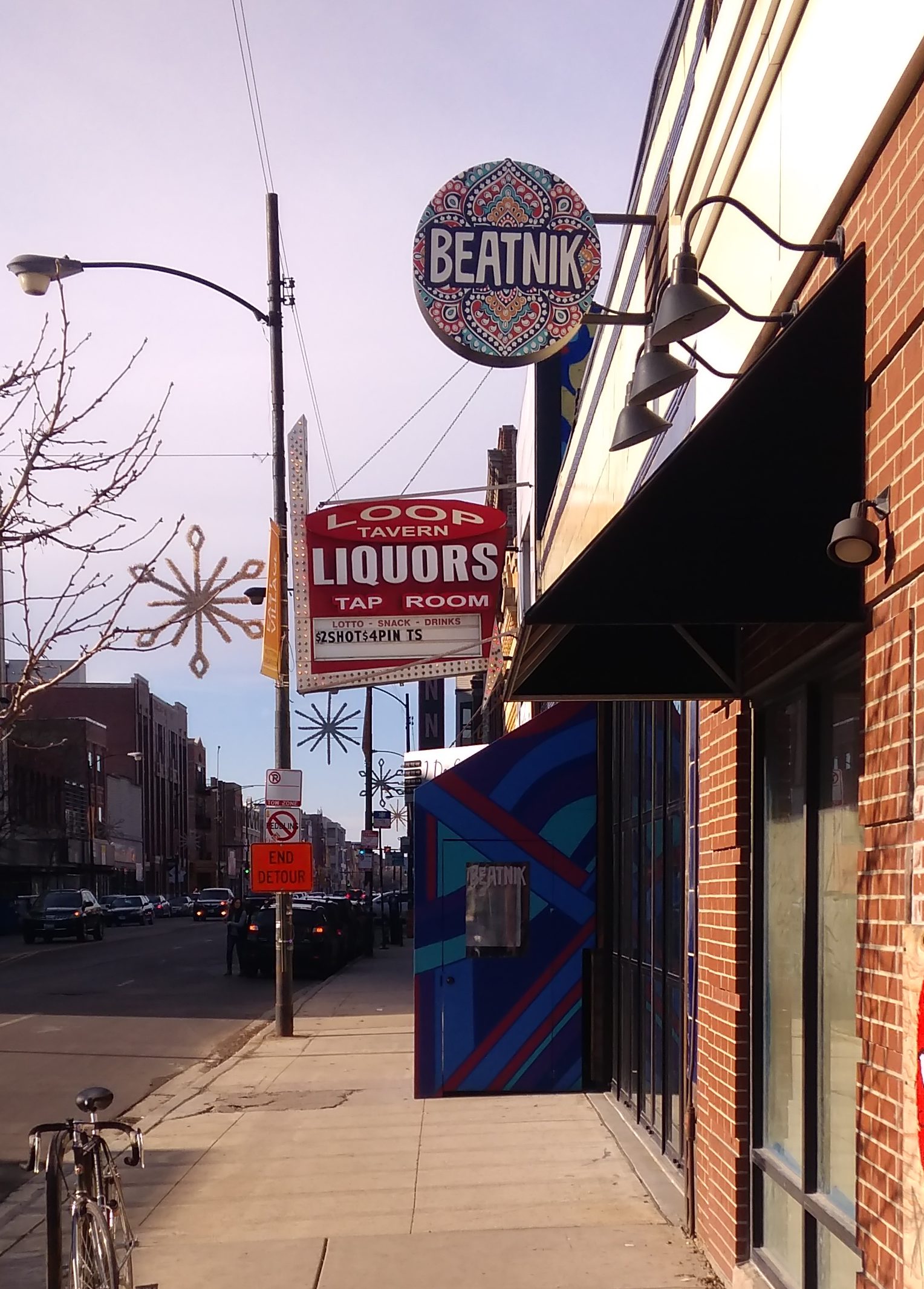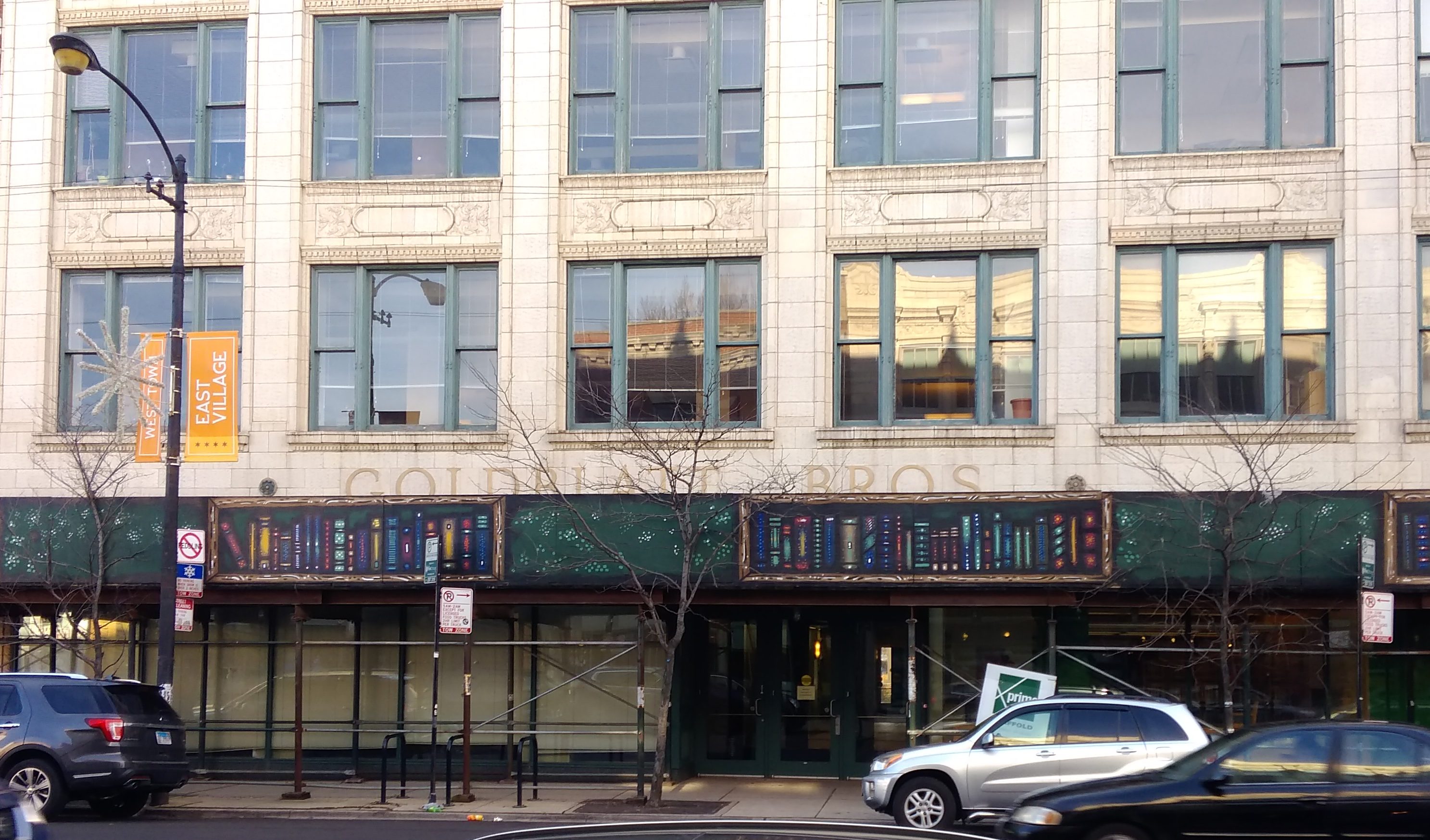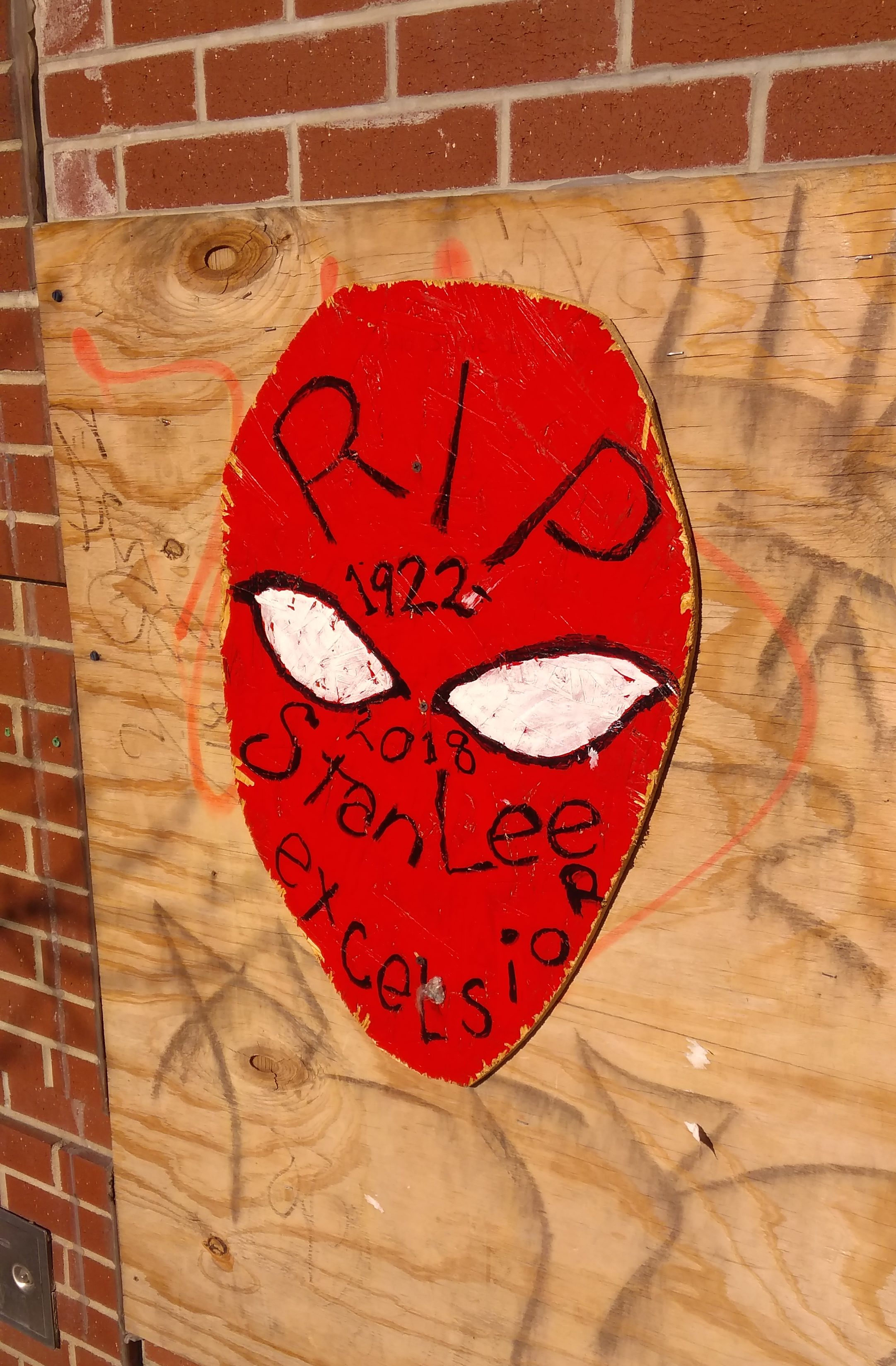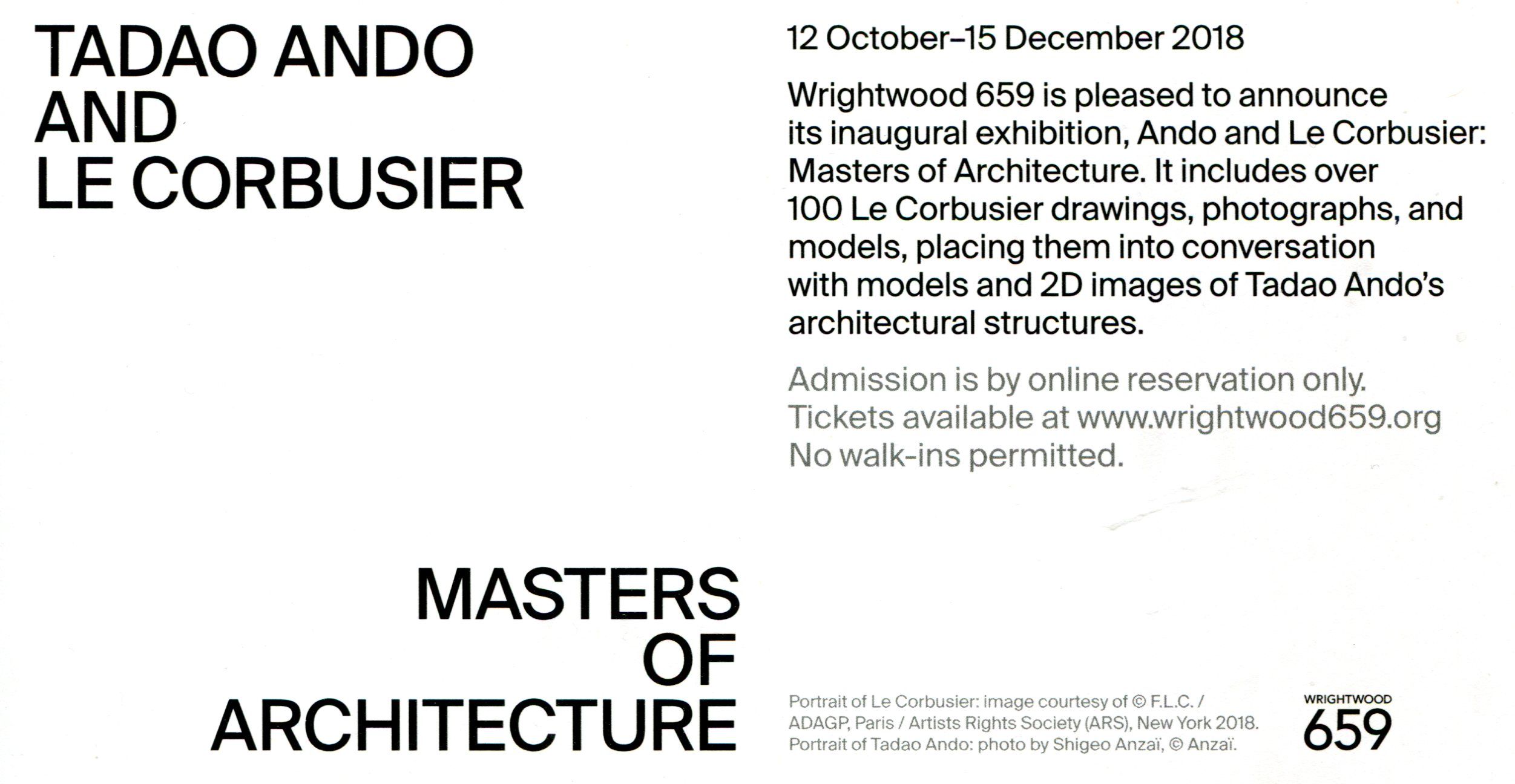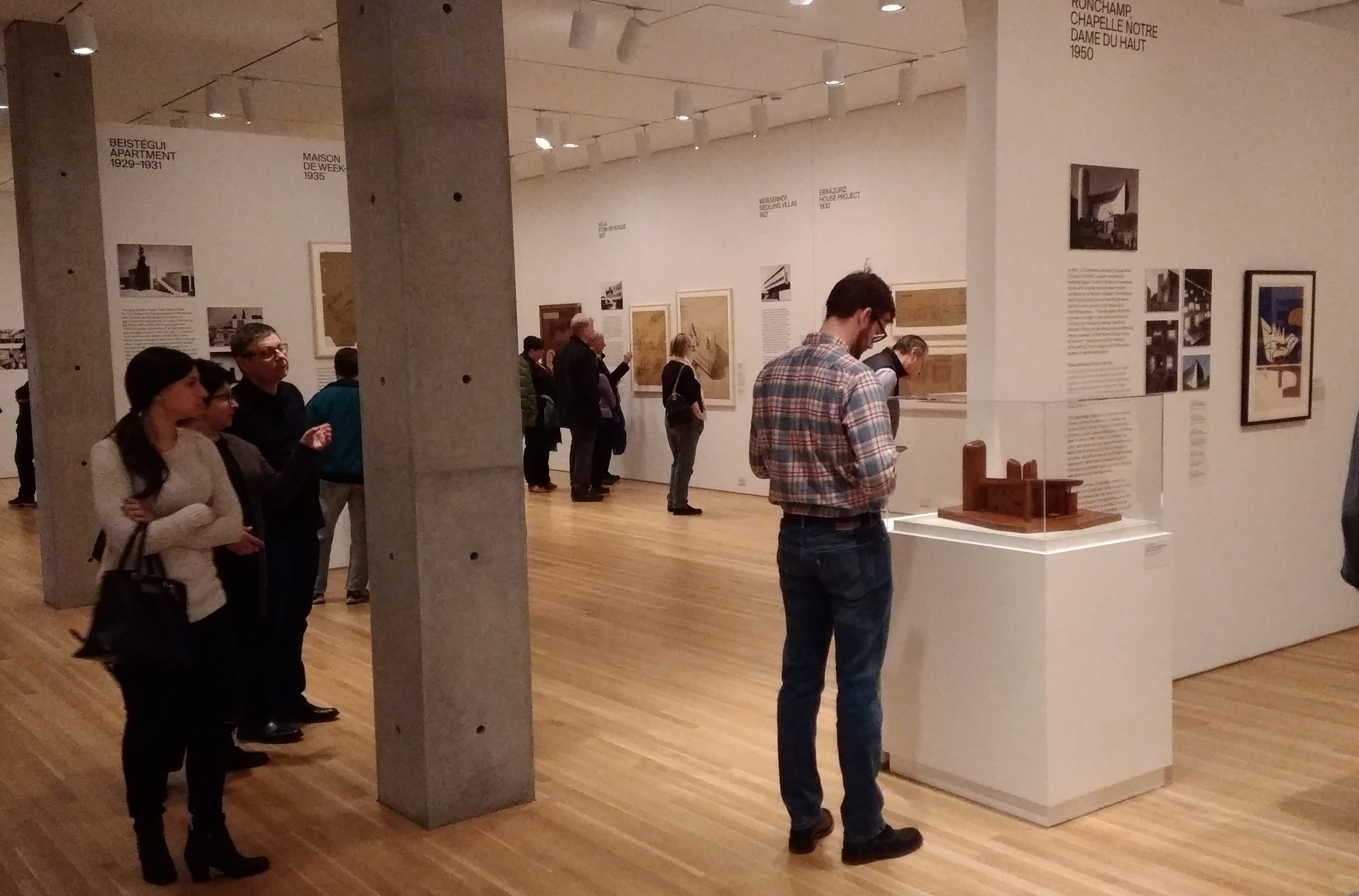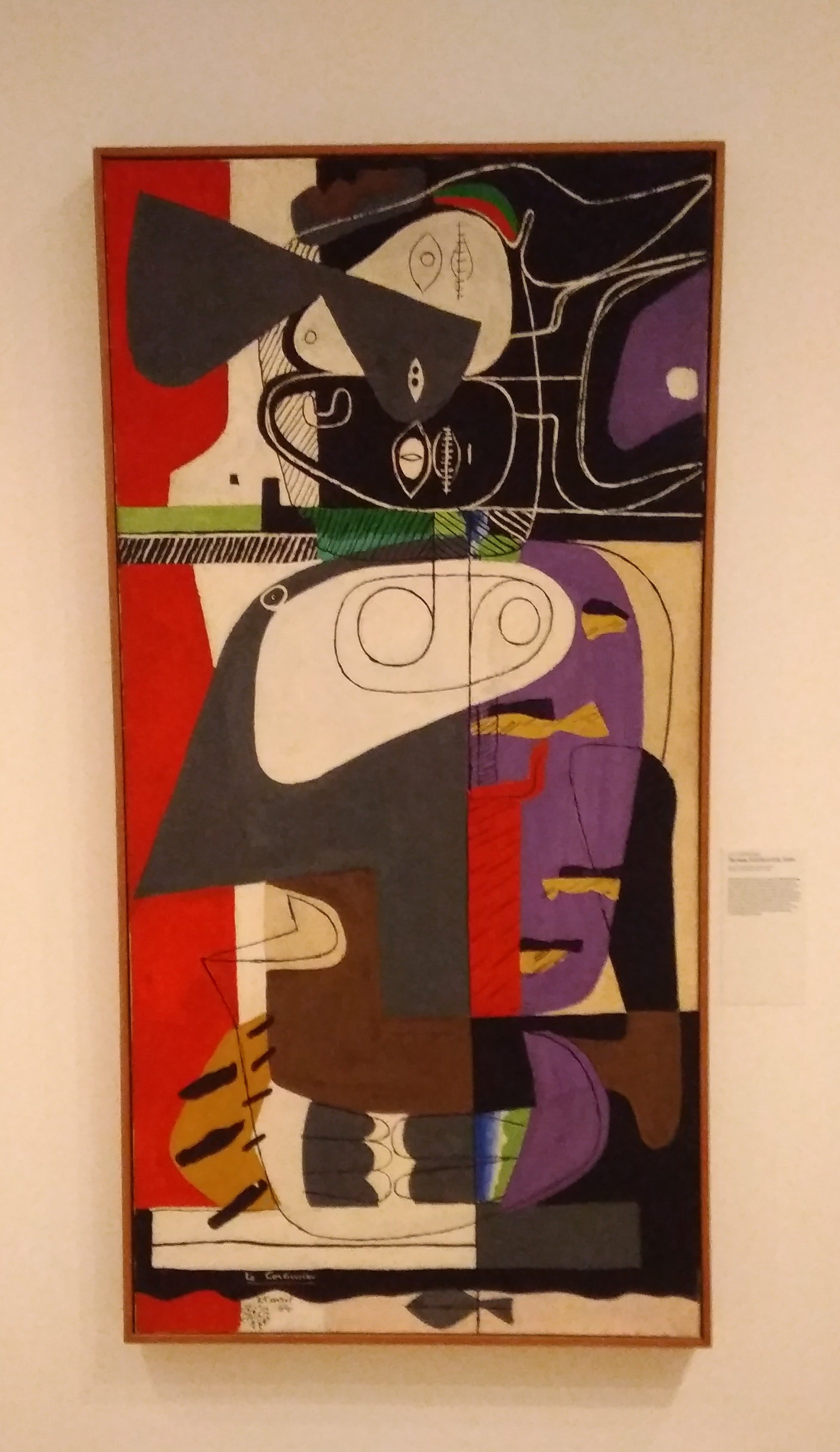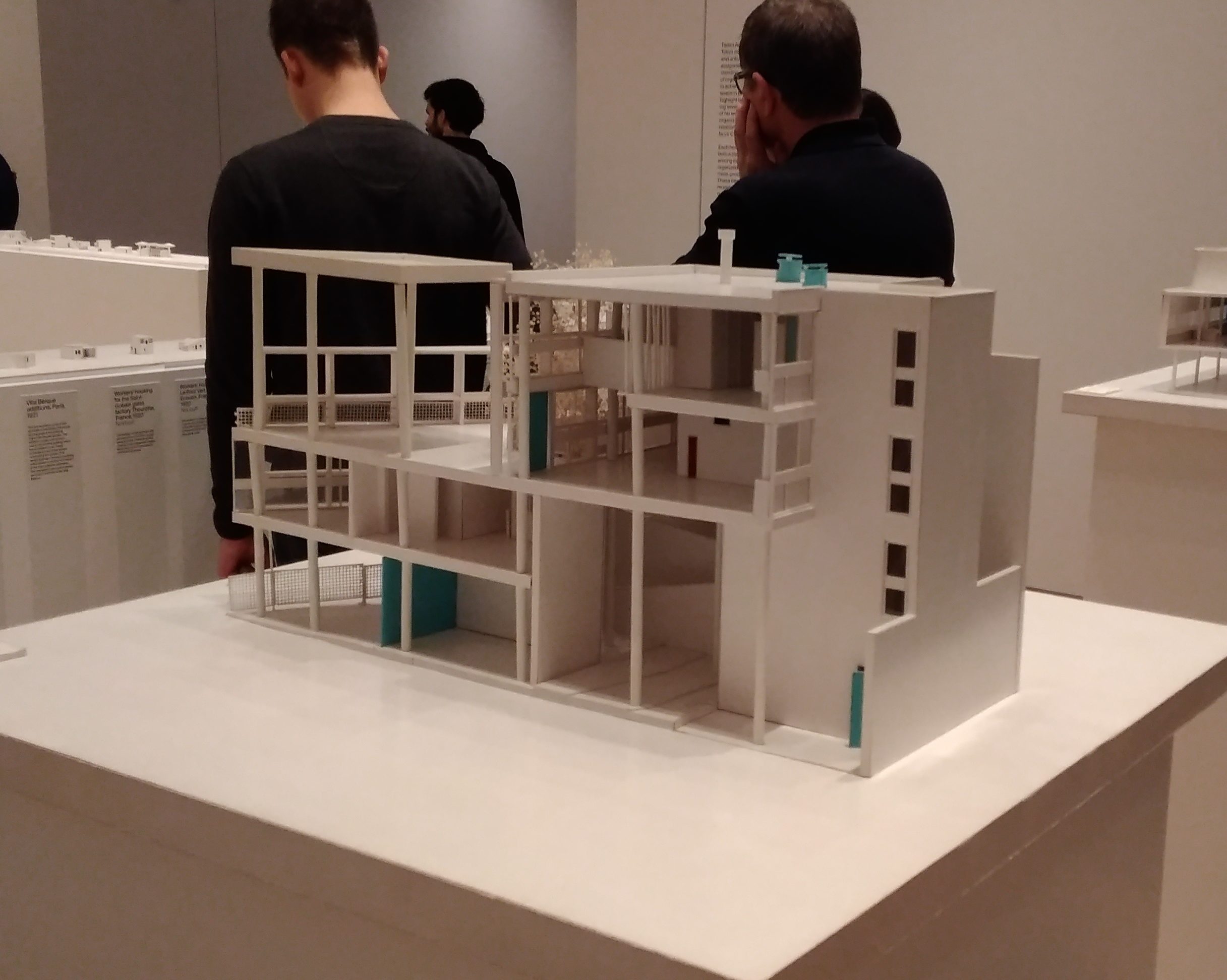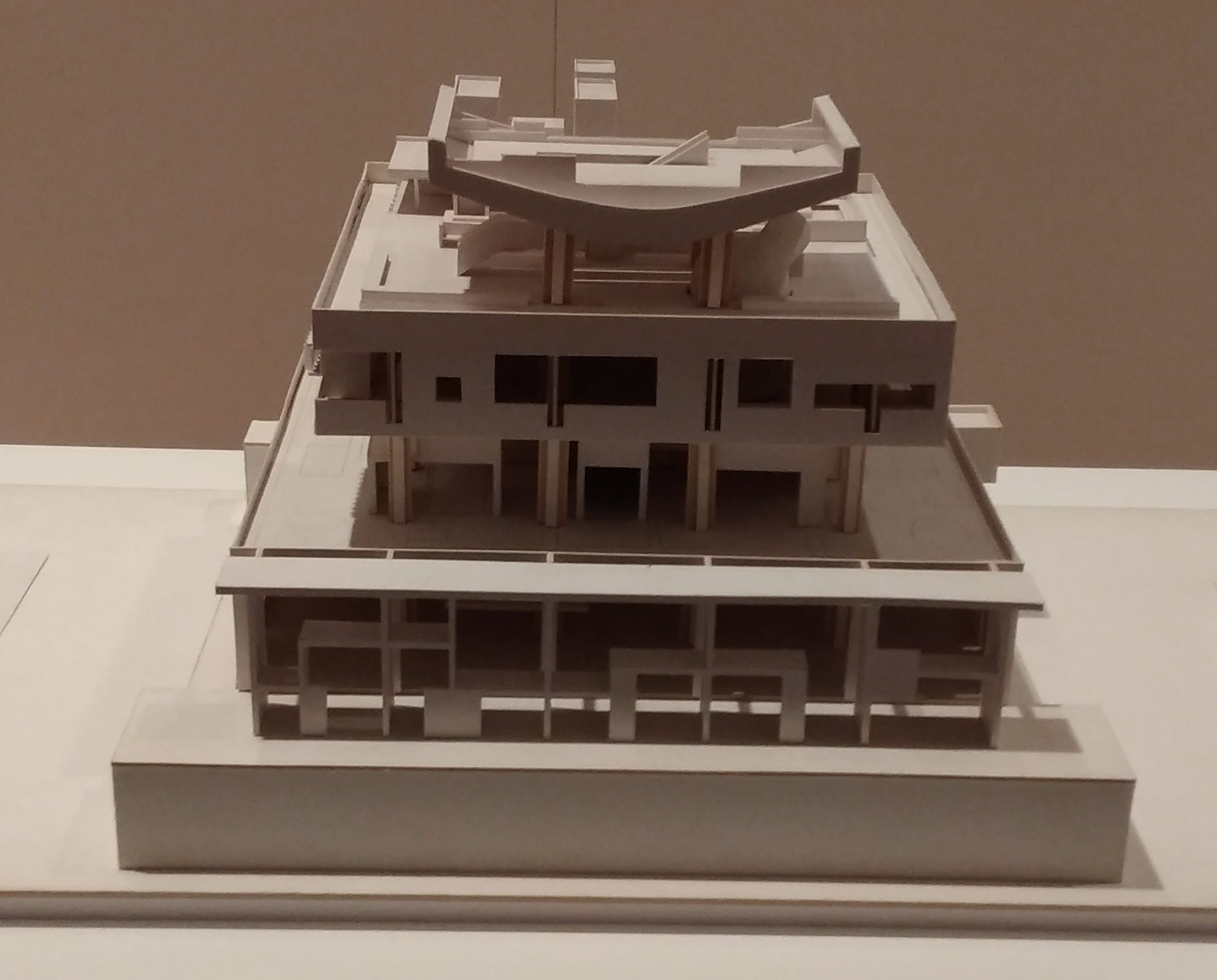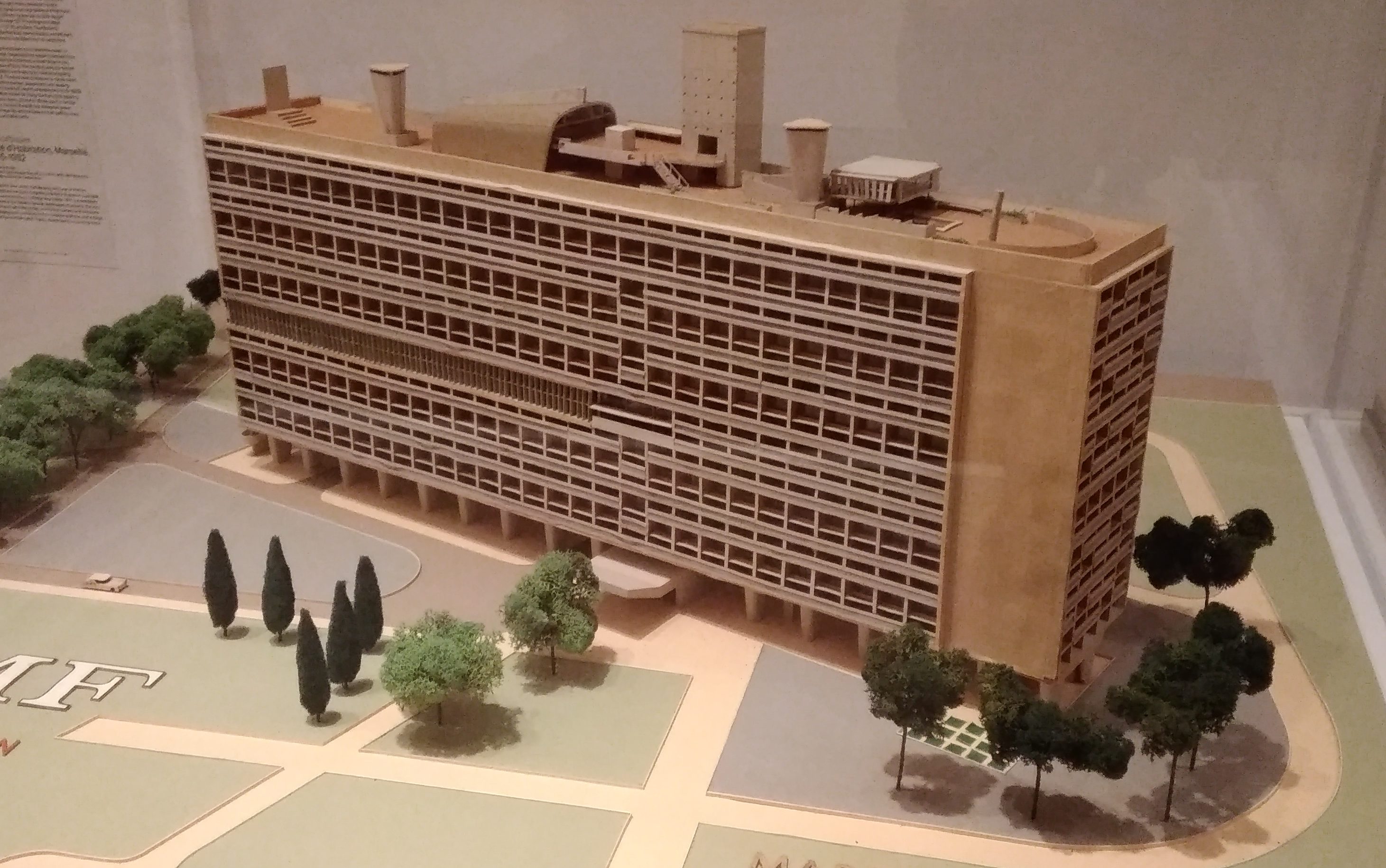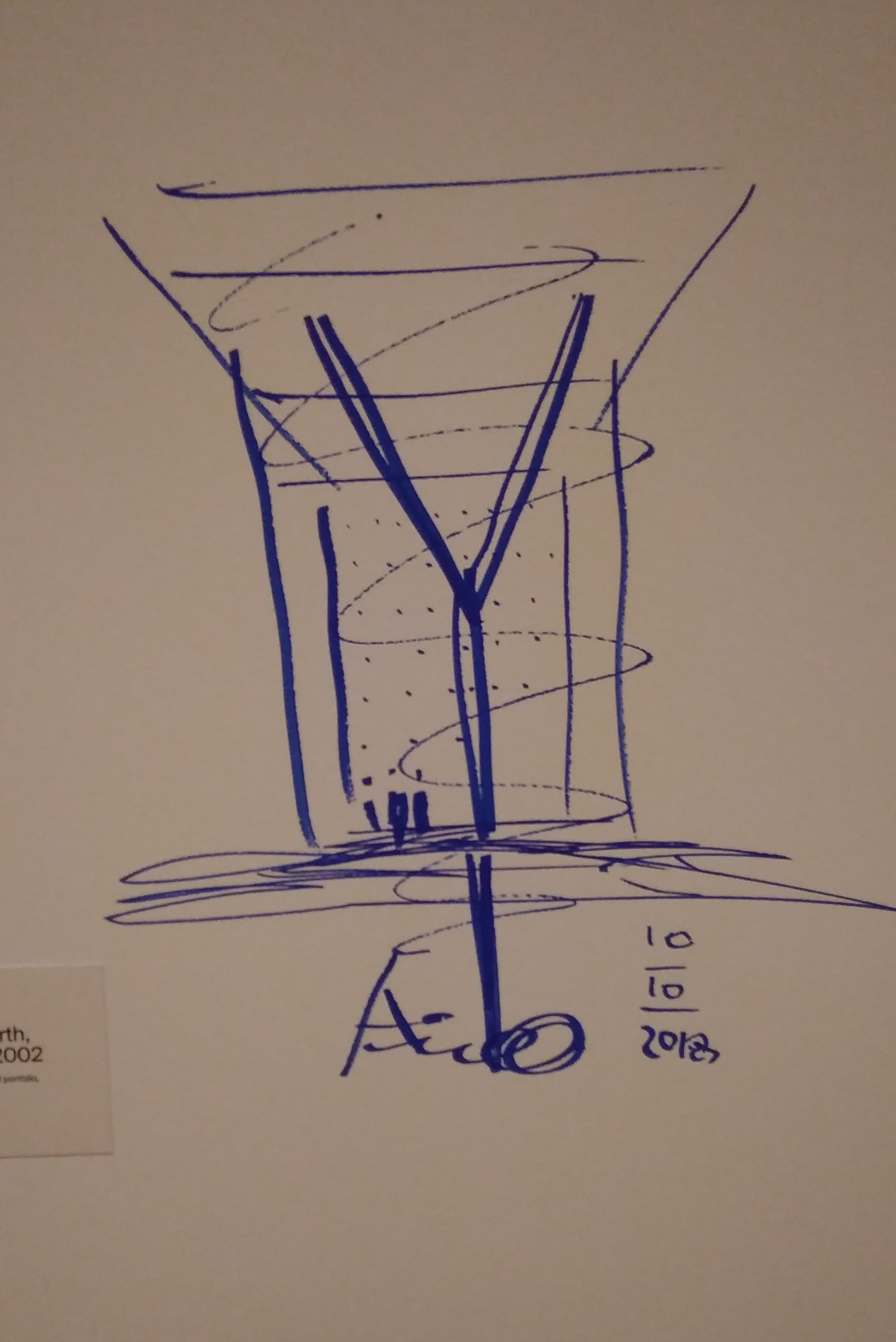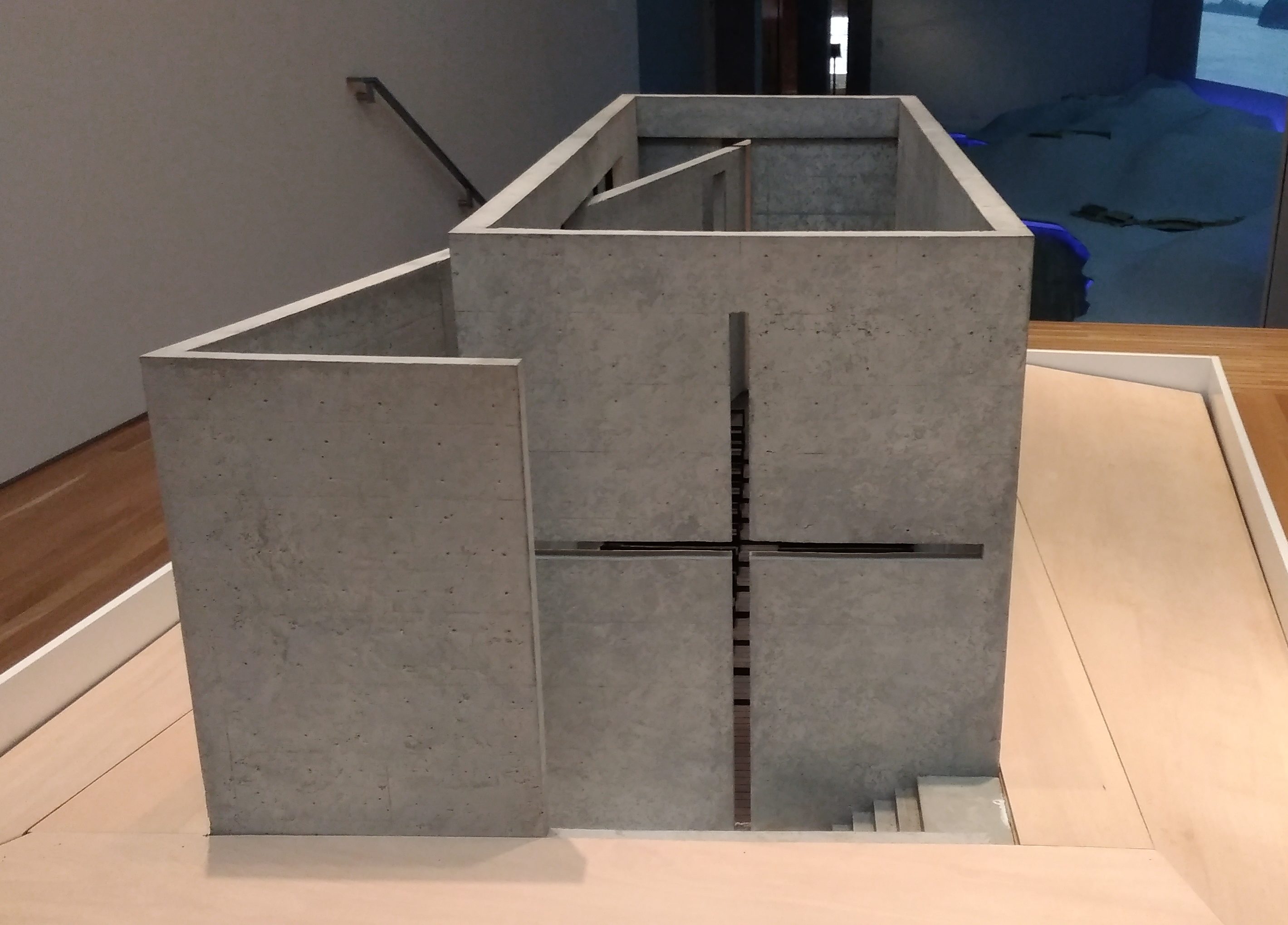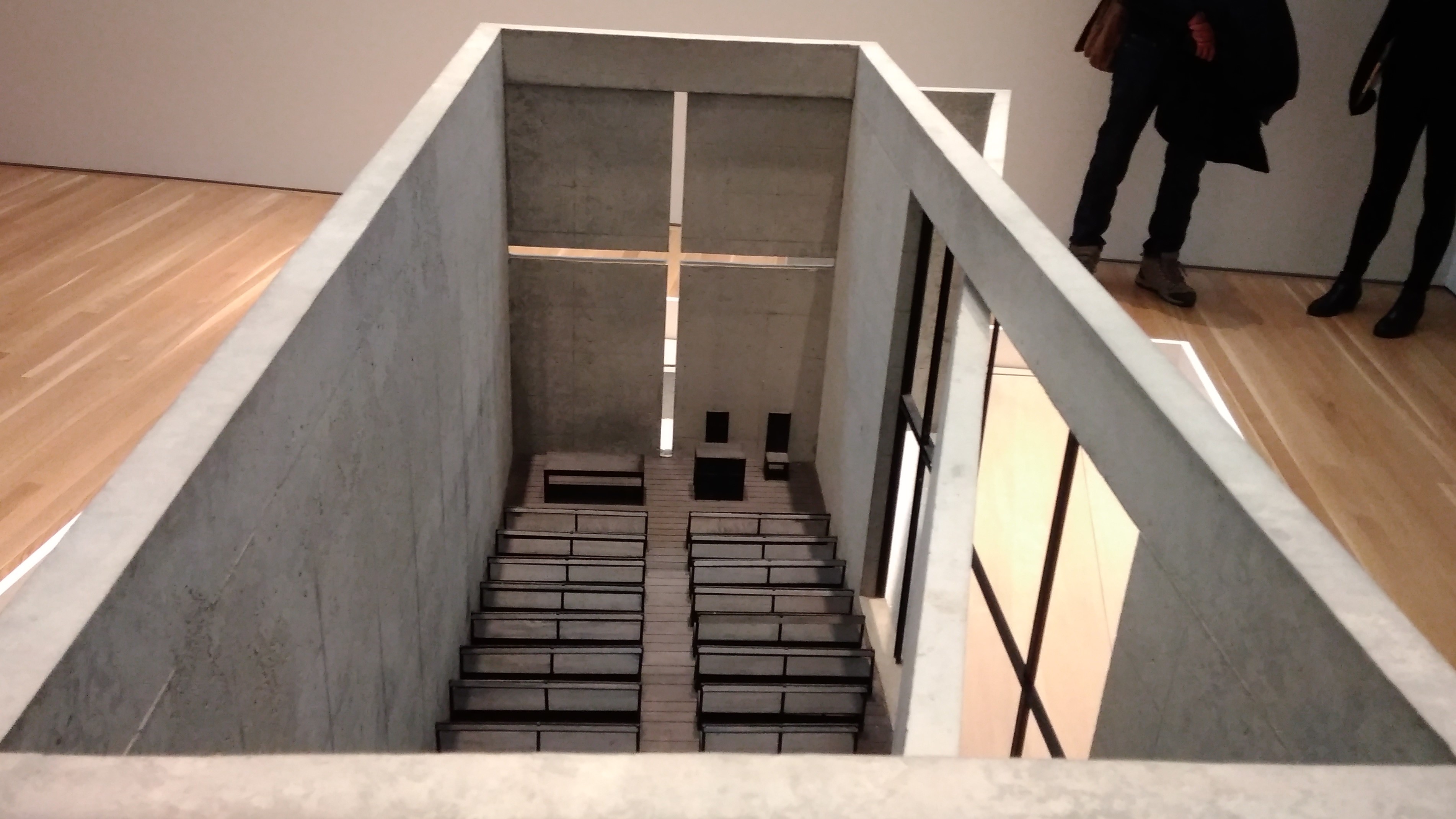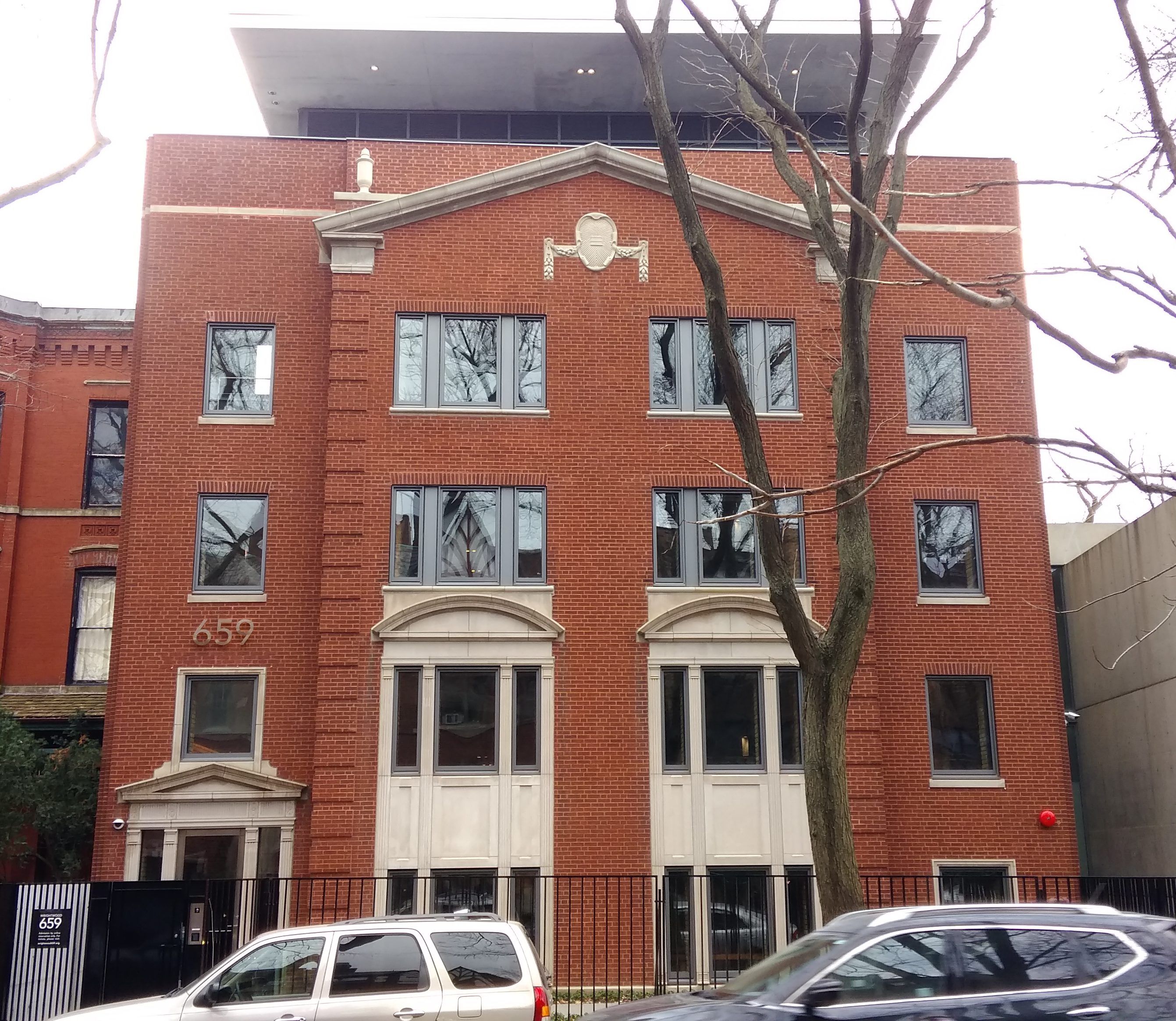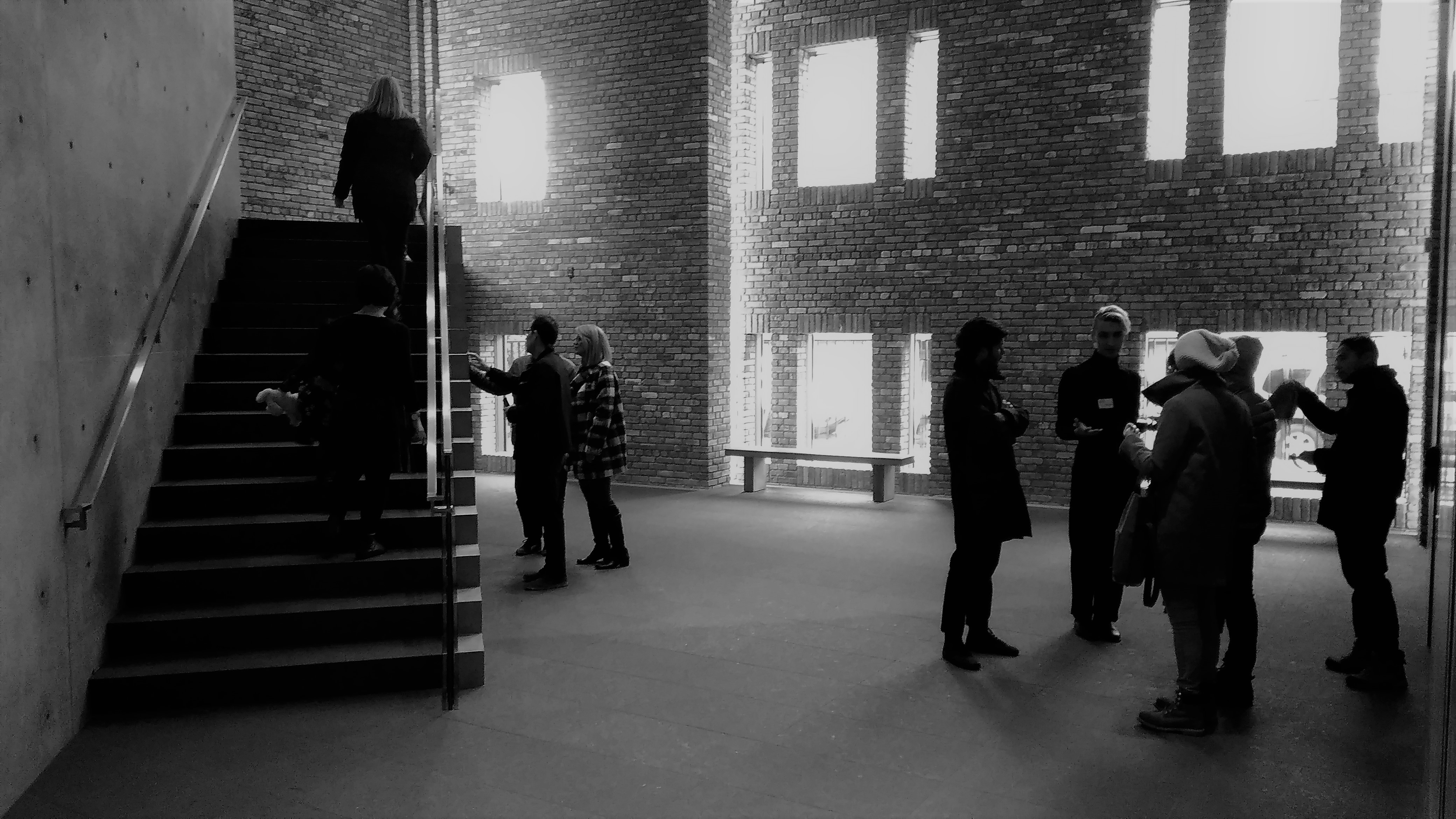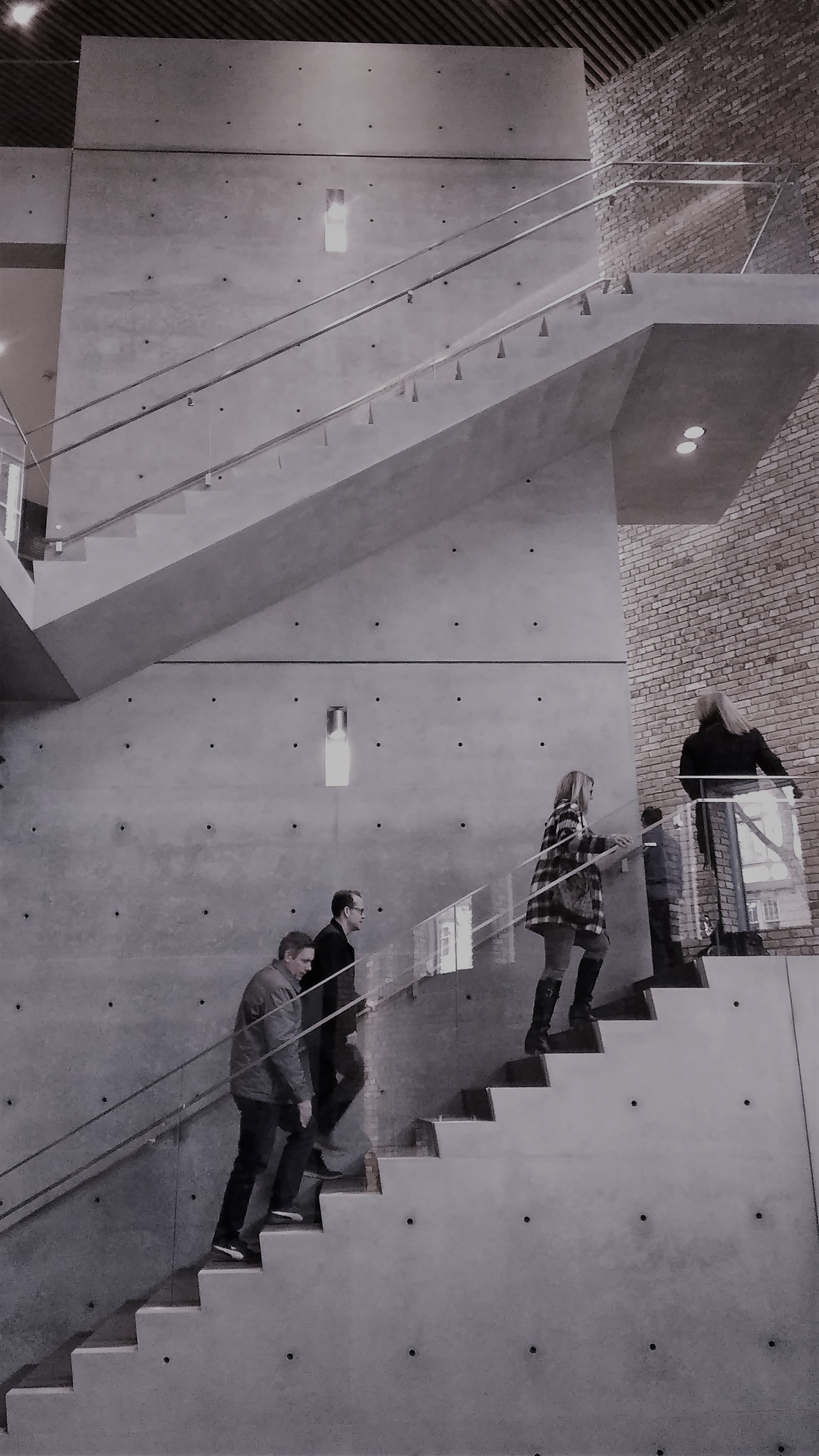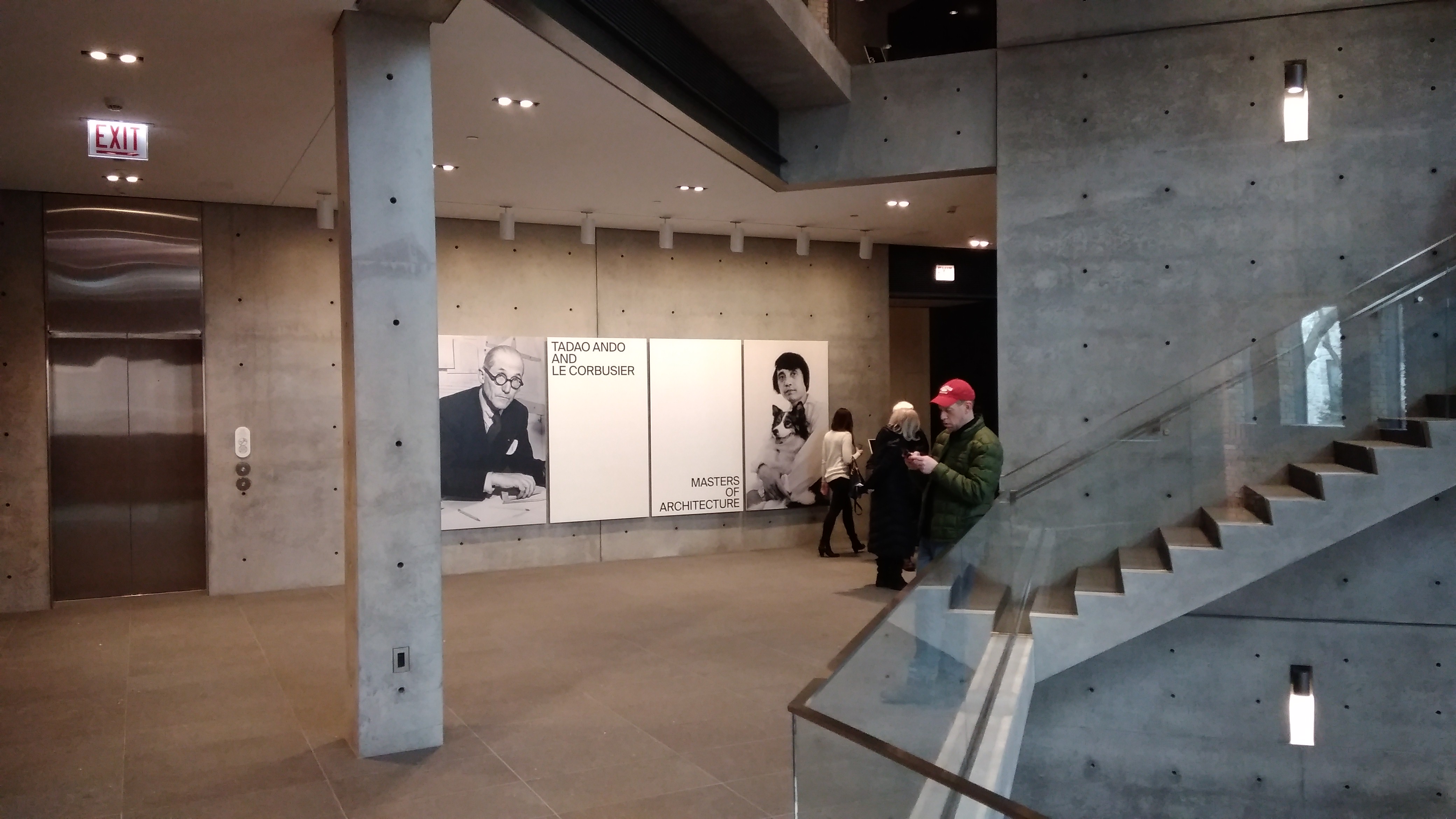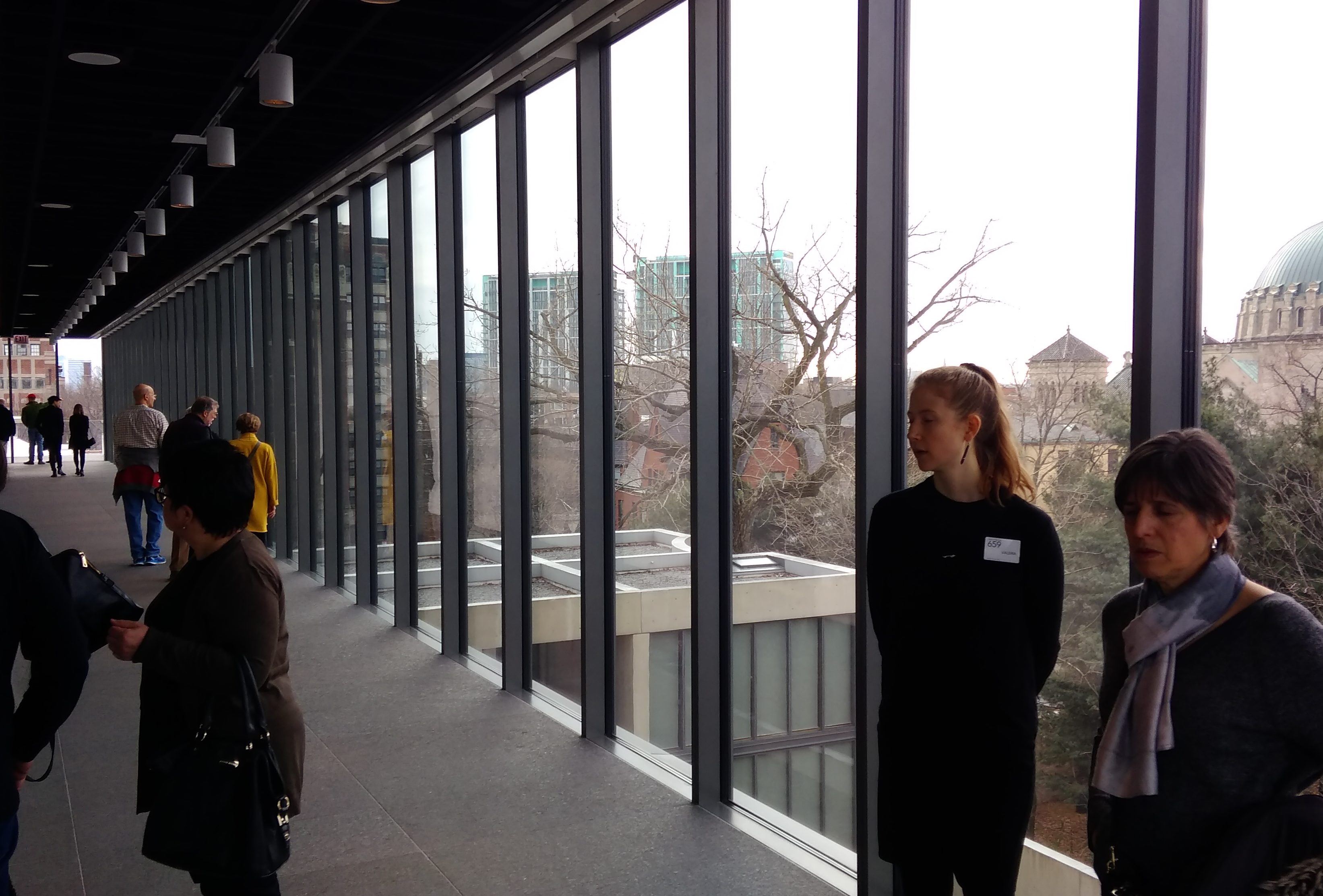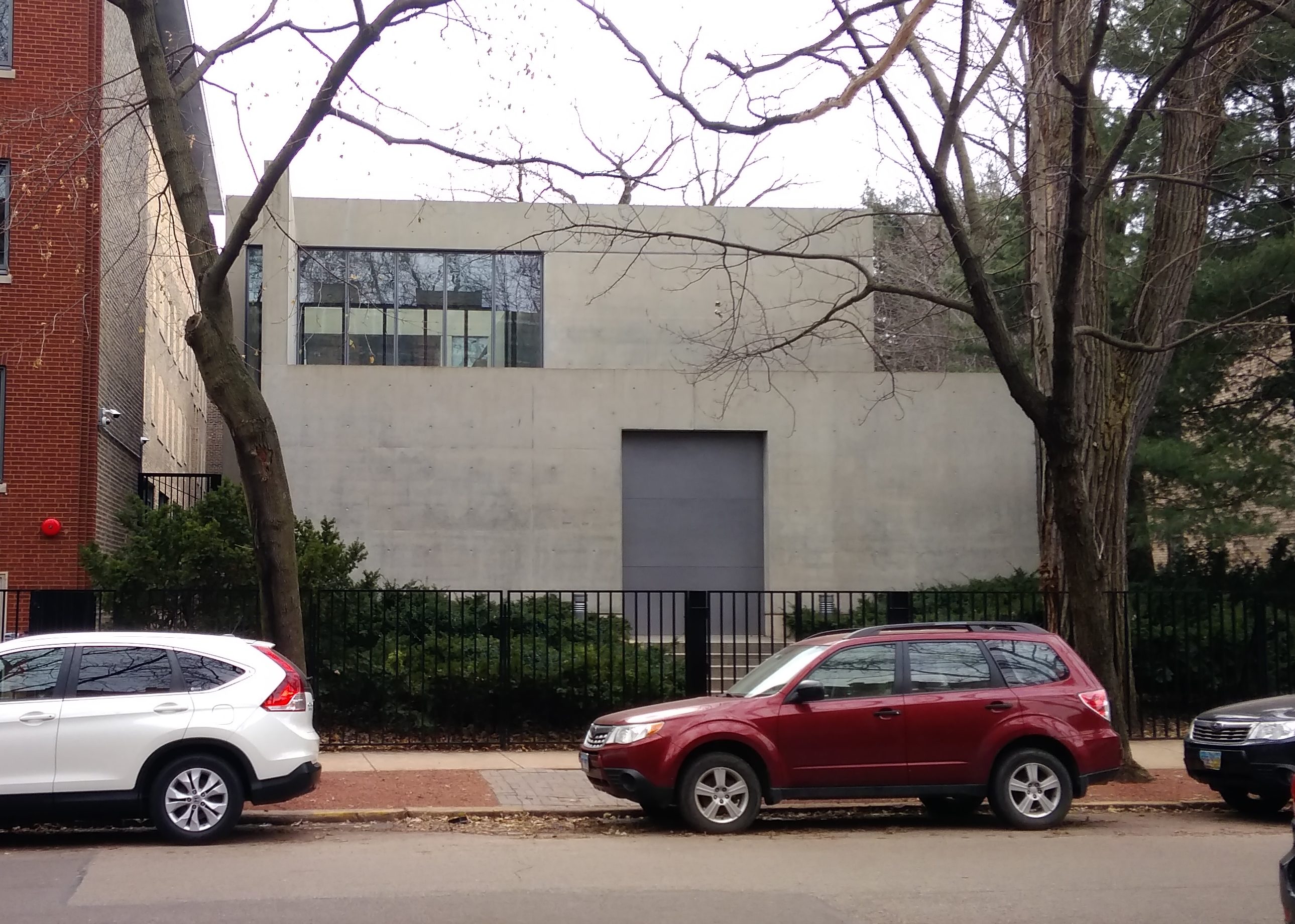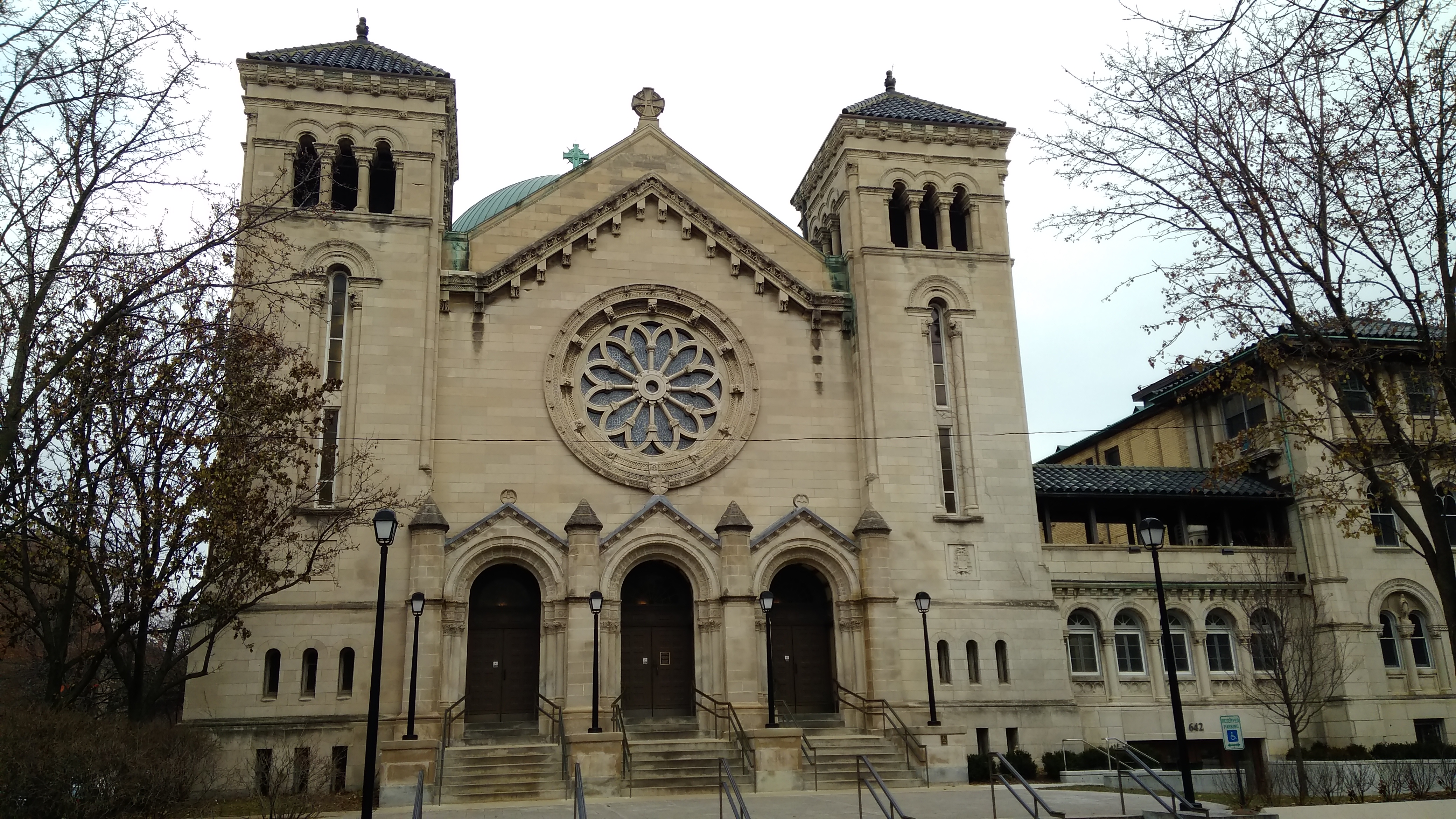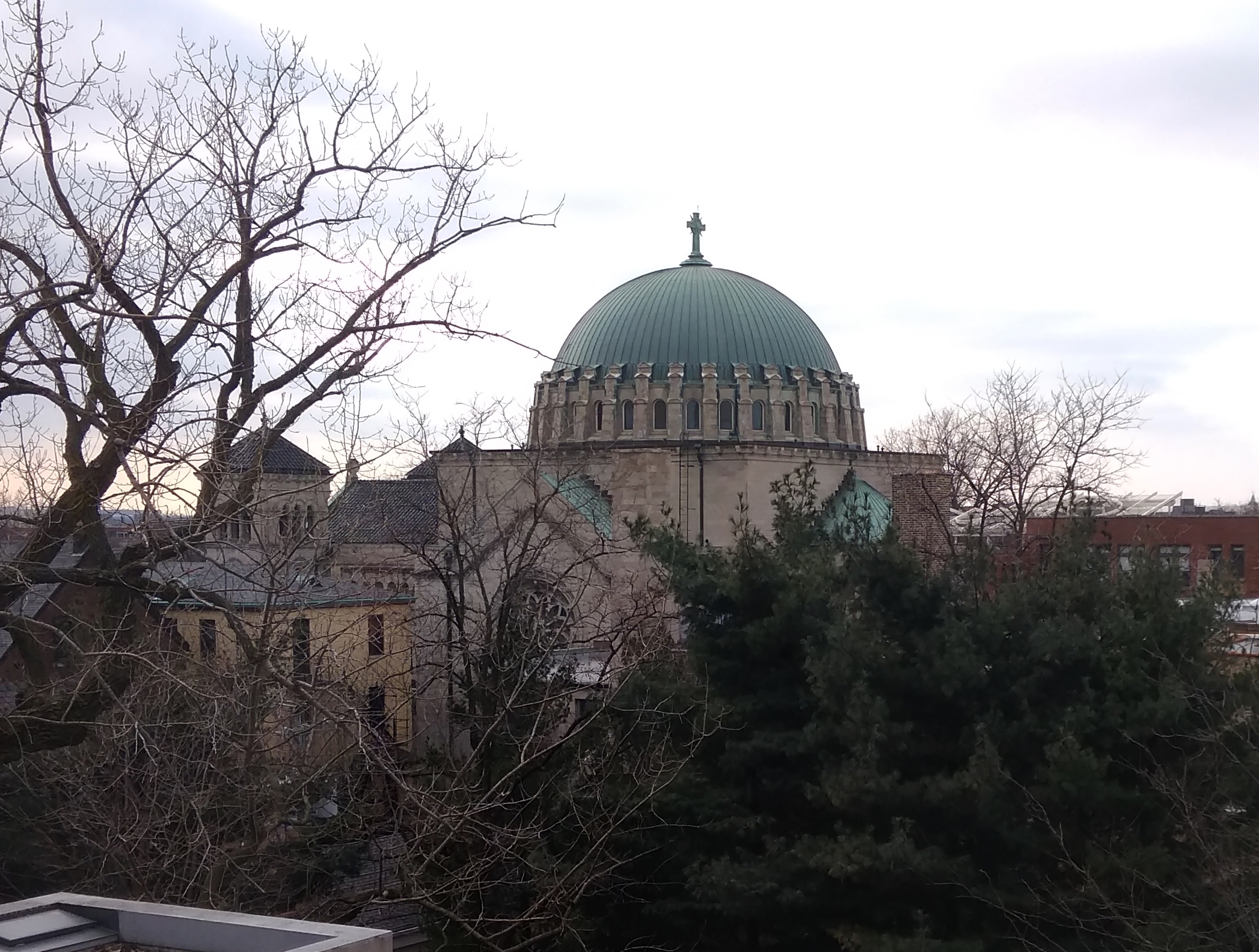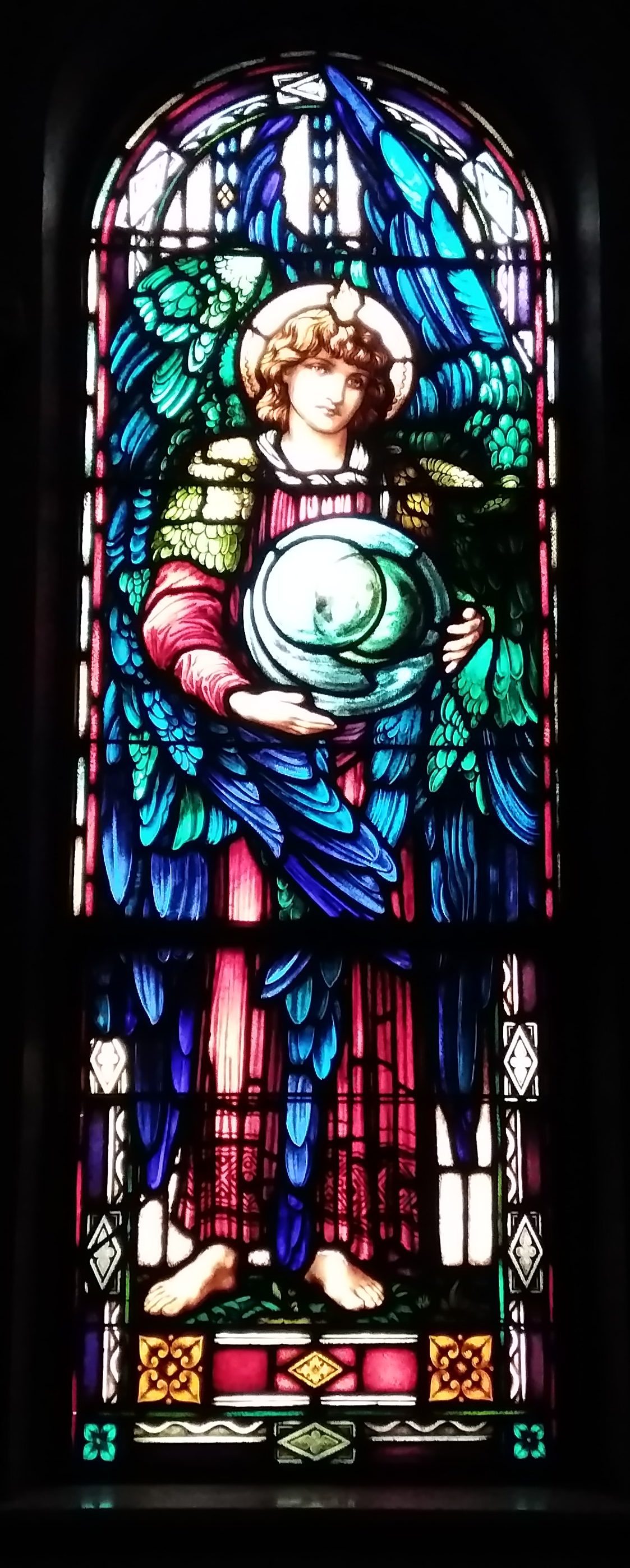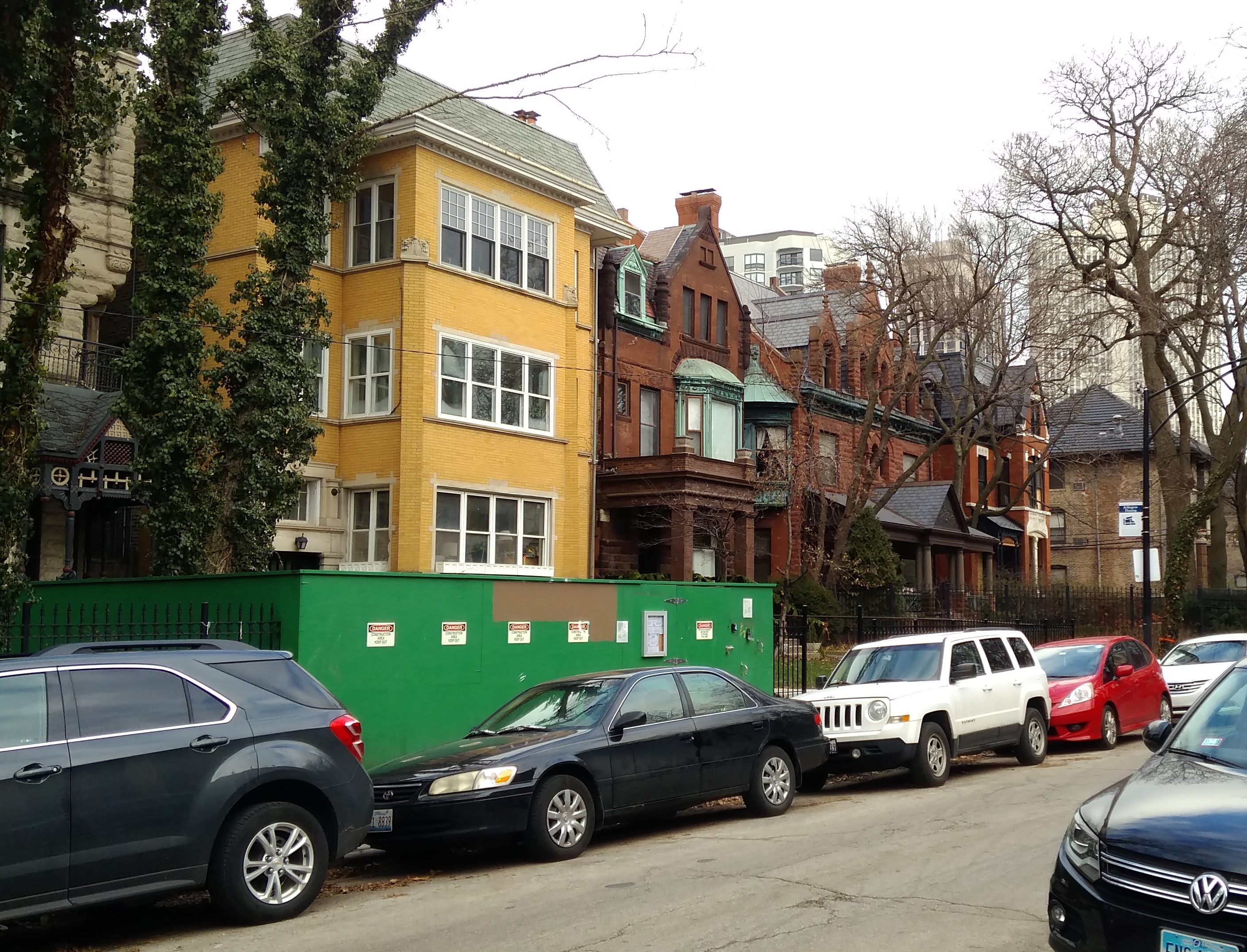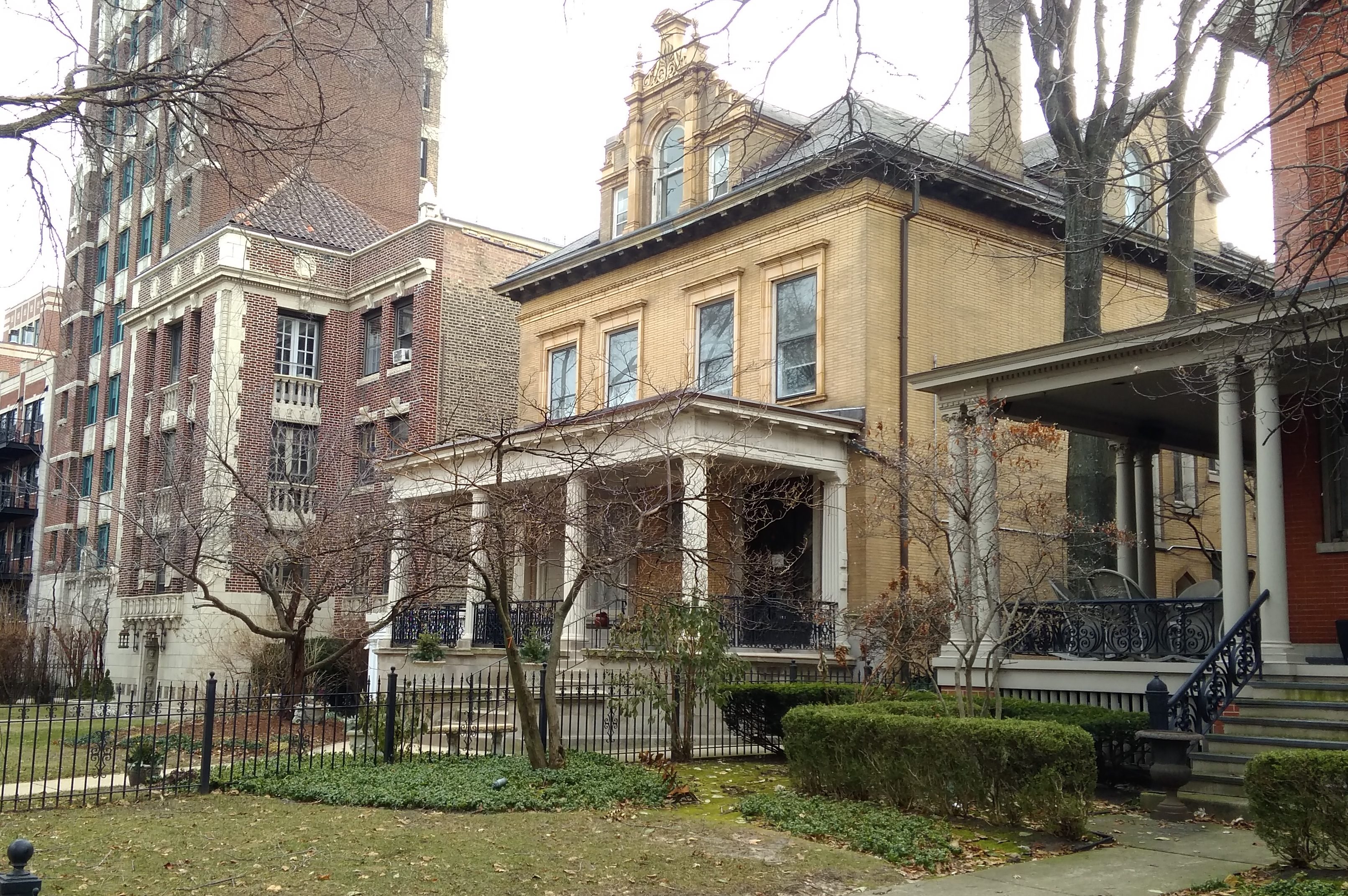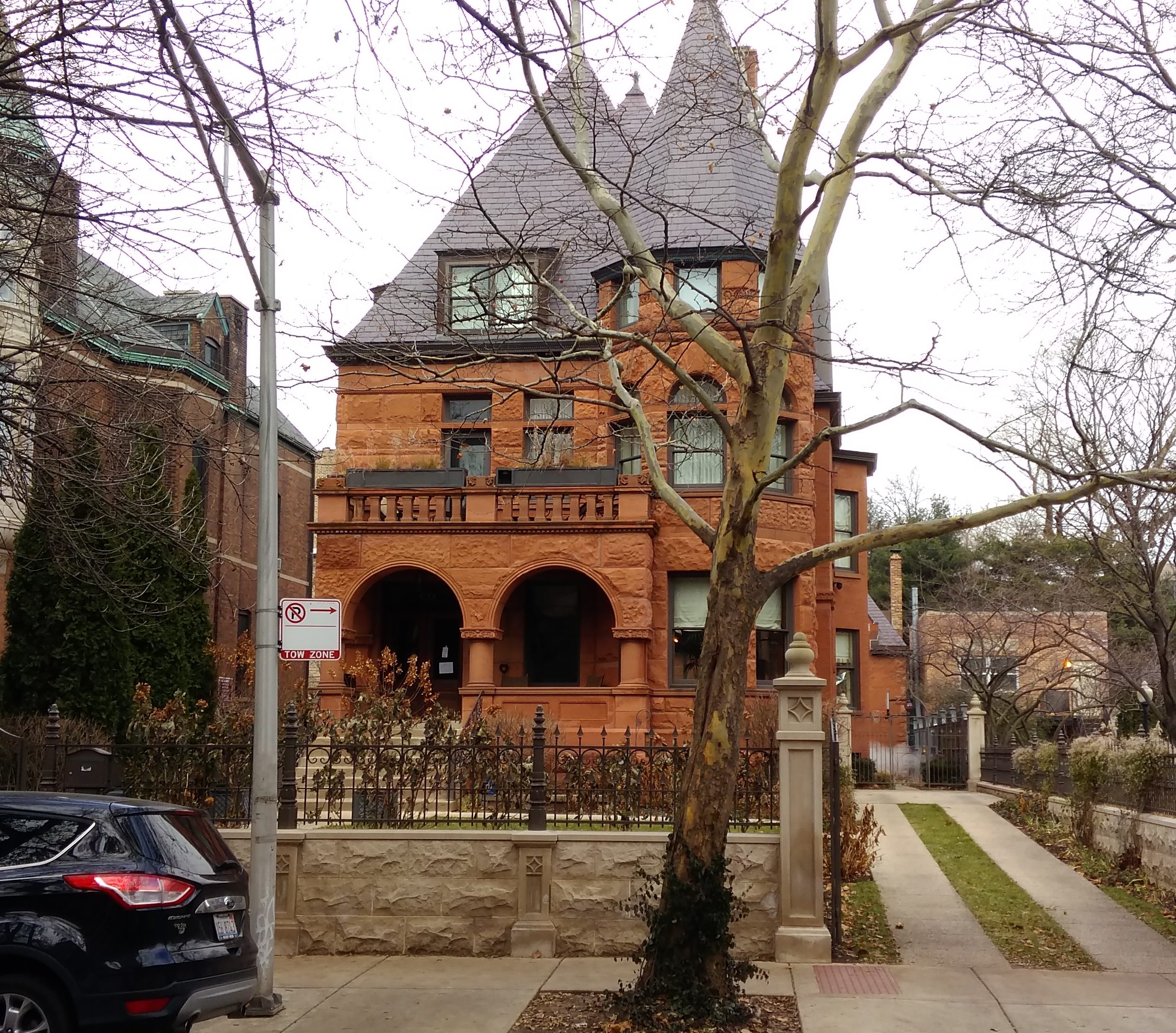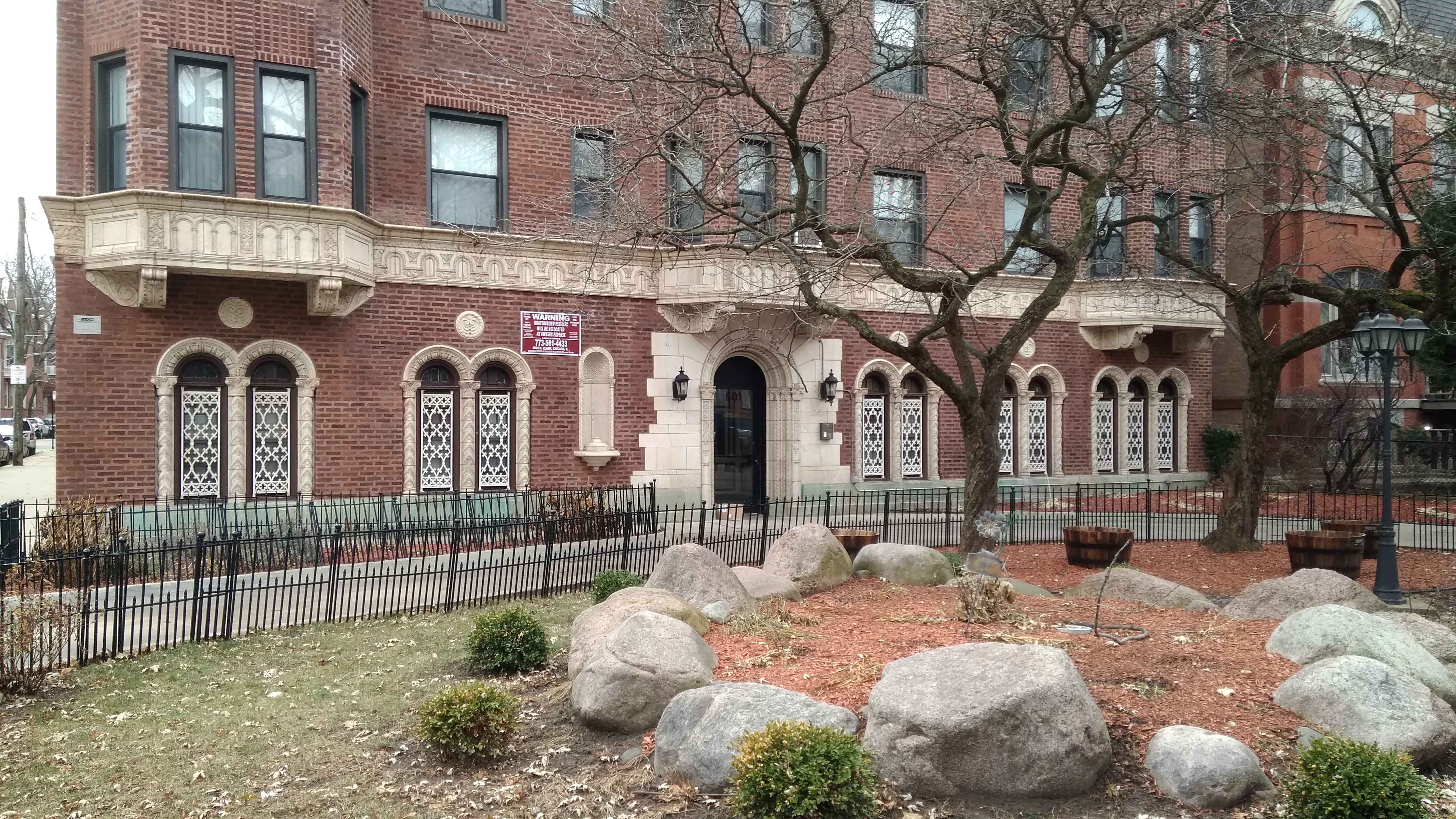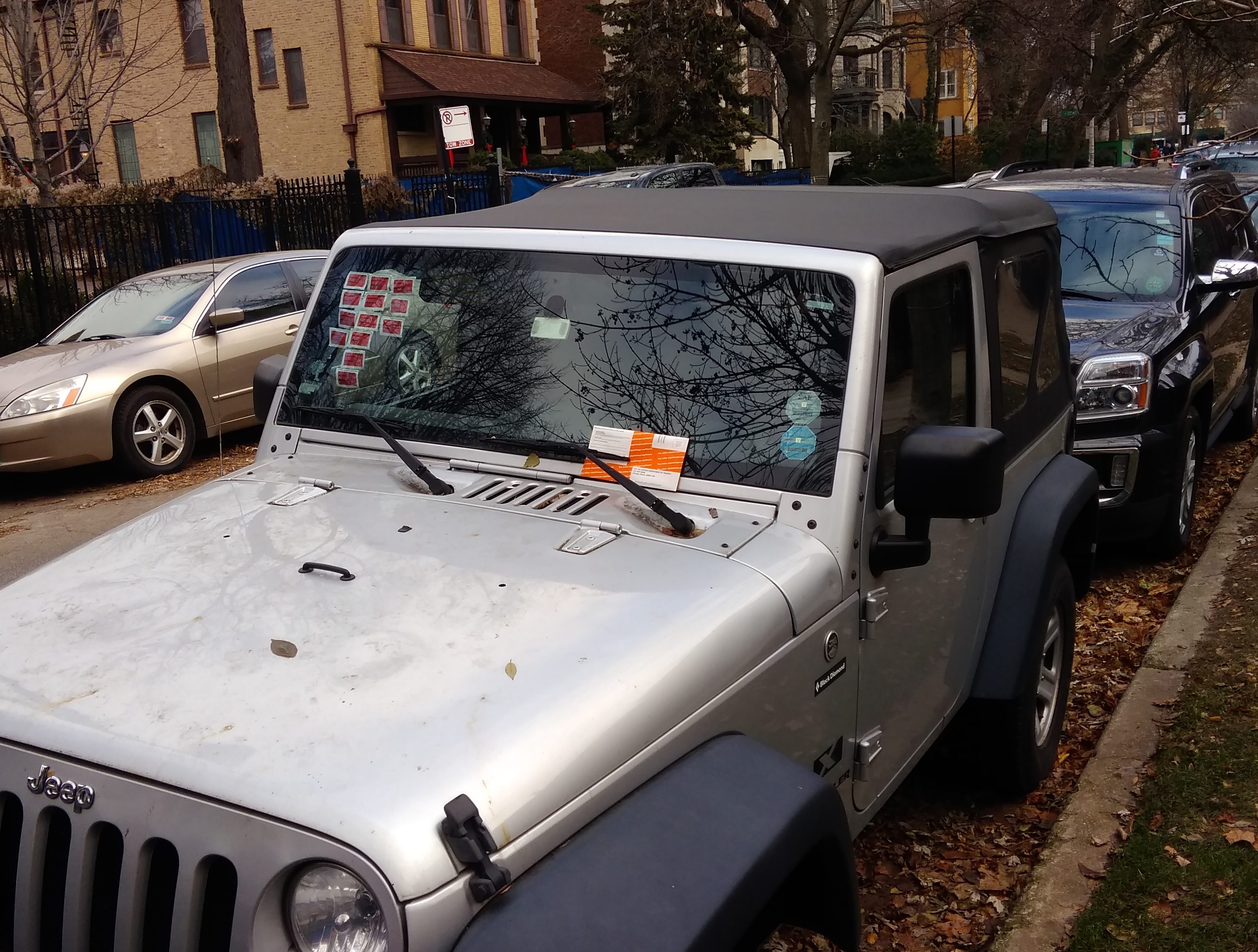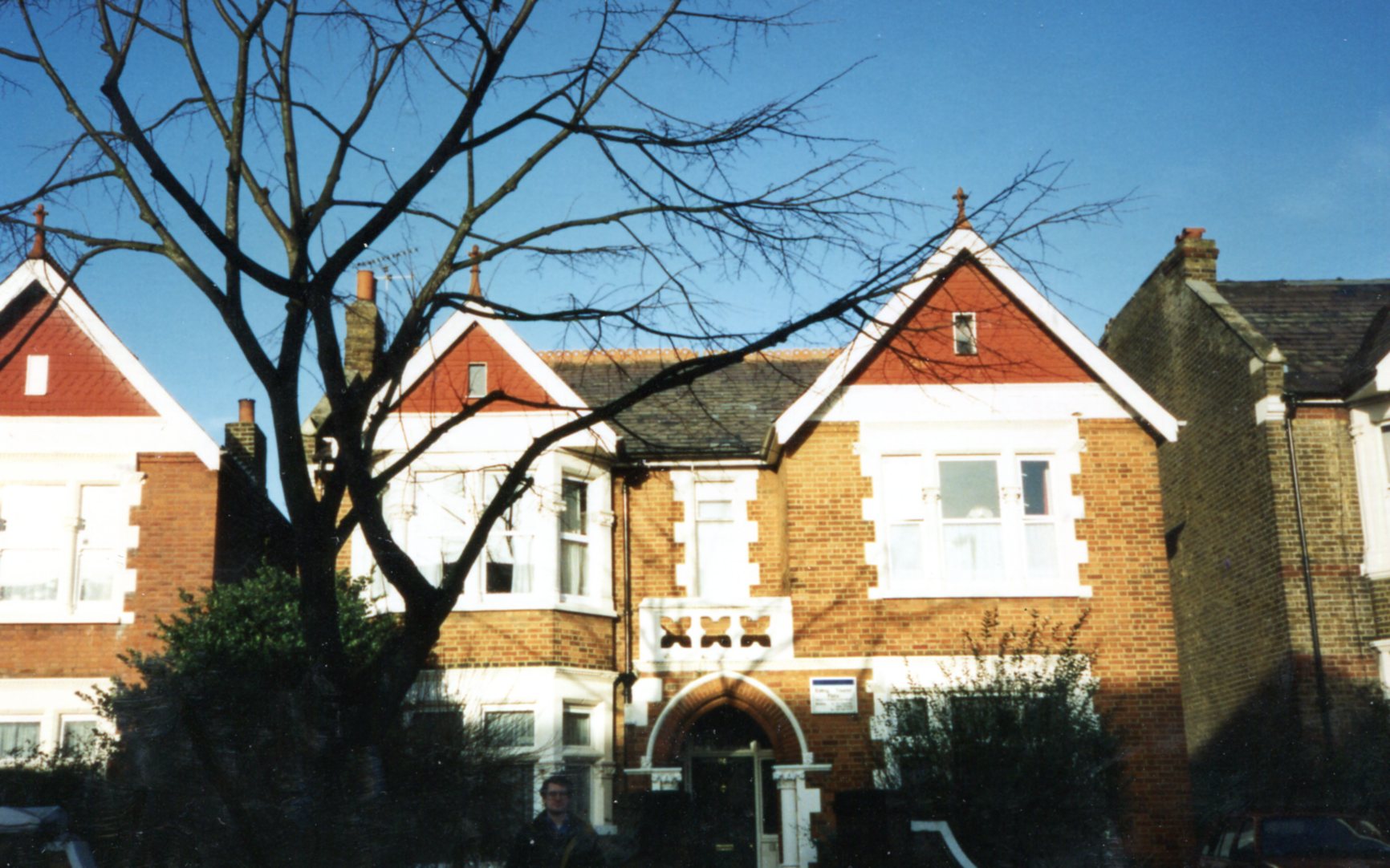At the intersection of Chicago Ave. and Noble St. in Chicago, you’ll find a word you don’t see that much: natatorium. It’s attached to the Ida Crown Natatorium, a unit of the Chicago Park District.
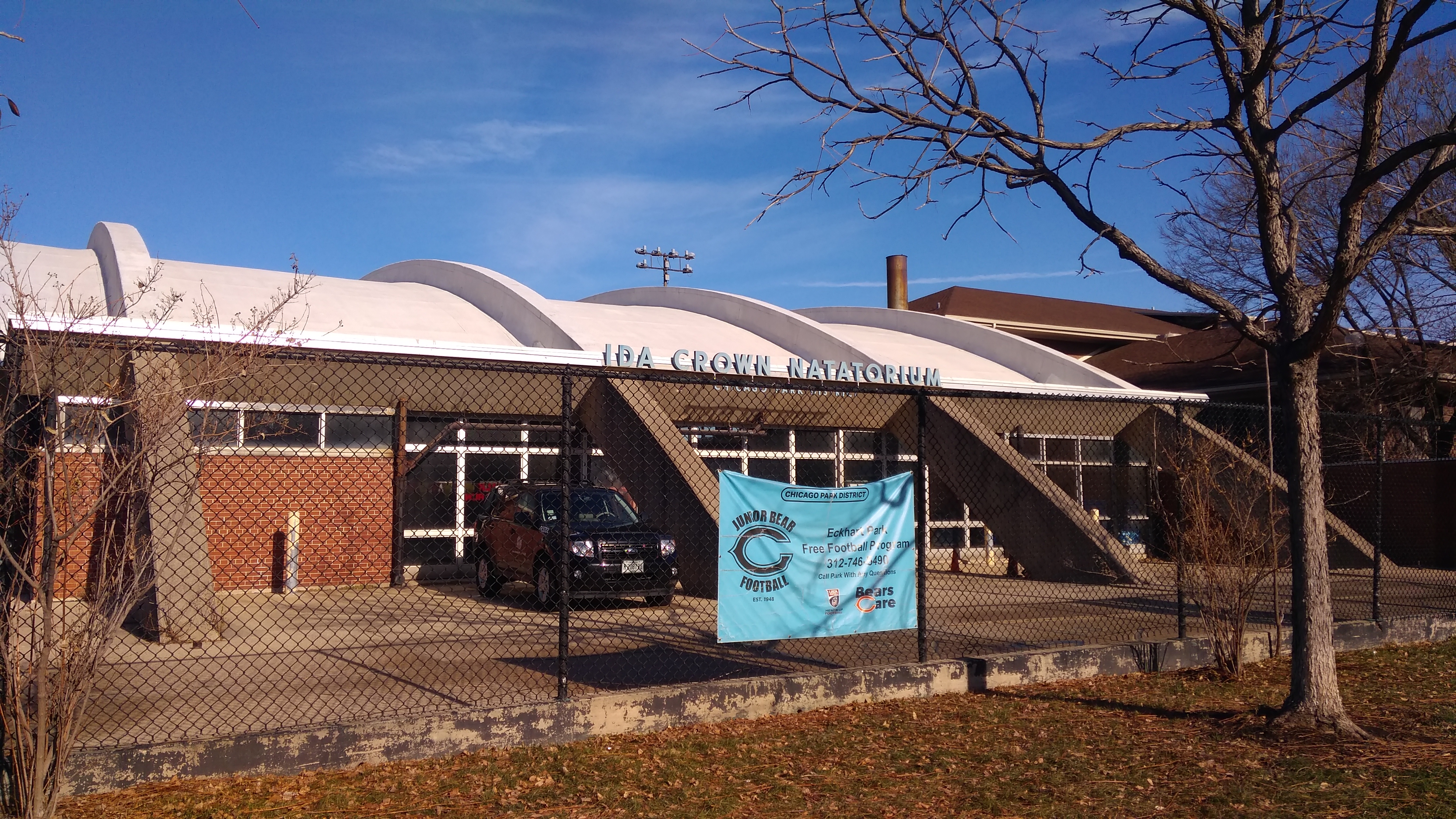 The facility has an entry in the Atlas Obscura, which notes that “its most arresting feature is the swooping, gently curved ‘barrel shell’ roof that arches over the pool, resembling in the words of one critic ‘a wave of concrete about to crash onto the shore of Chicago Avenue.’
The facility has an entry in the Atlas Obscura, which notes that “its most arresting feature is the swooping, gently curved ‘barrel shell’ roof that arches over the pool, resembling in the words of one critic ‘a wave of concrete about to crash onto the shore of Chicago Avenue.’
“Mayor Richard J. Daley himself presided over the pool’s dedication in 1961, which was named for one of Chicago’s most prominent philanthropic families.” (Actually, Ida was a member of that family, the grandmother of this wealthy fellow.)
The natatorium is at the south end of the mid-sized Eckhart Park, which is otherwise an open area of playing fields. Rising over the north end of Eckhart Park, along W. Chestnut St., is the shuttered St. Boniface Church, originally built in the early 1900s for a primarily German Catholic congregation. Presumably they didn’t want to share a church with the surrounding Poles, and vice versa. St. Boniface, of course, led the effort to Christianize the Germans and is highly regarded in that country.
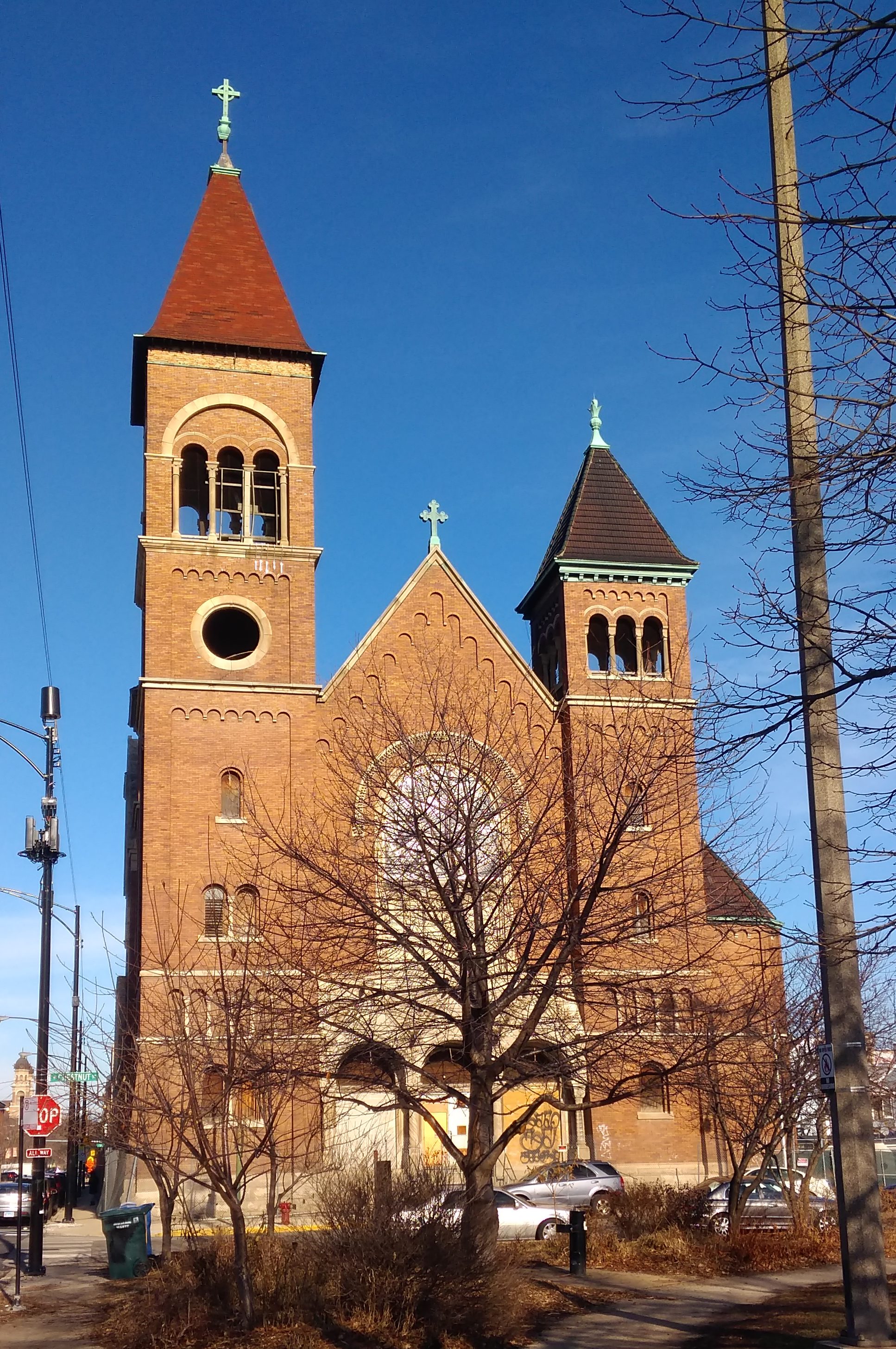 Given the Chicago Archdiocese’s history of knocking down splendid Chicago churches because money is tight (and these days, there are other bills to pay), I’m surprised that the shell of St. Boniface, which closed in 1990, is still standing.
Given the Chicago Archdiocese’s history of knocking down splendid Chicago churches because money is tight (and these days, there are other bills to pay), I’m surprised that the shell of St. Boniface, which closed in 1990, is still standing.
This summer, the city approved plans to redevelop the structure into condominiums, including a new building as well as units in what used to be the sanctuary. That’s better than razing the grand old church. To the side of the boarded-up structure, I noticed a construction site in its early stages.
The redevelopment is slated for completion in 2020, but for now St. Boniface still has that abandoned look. Inside, even more.
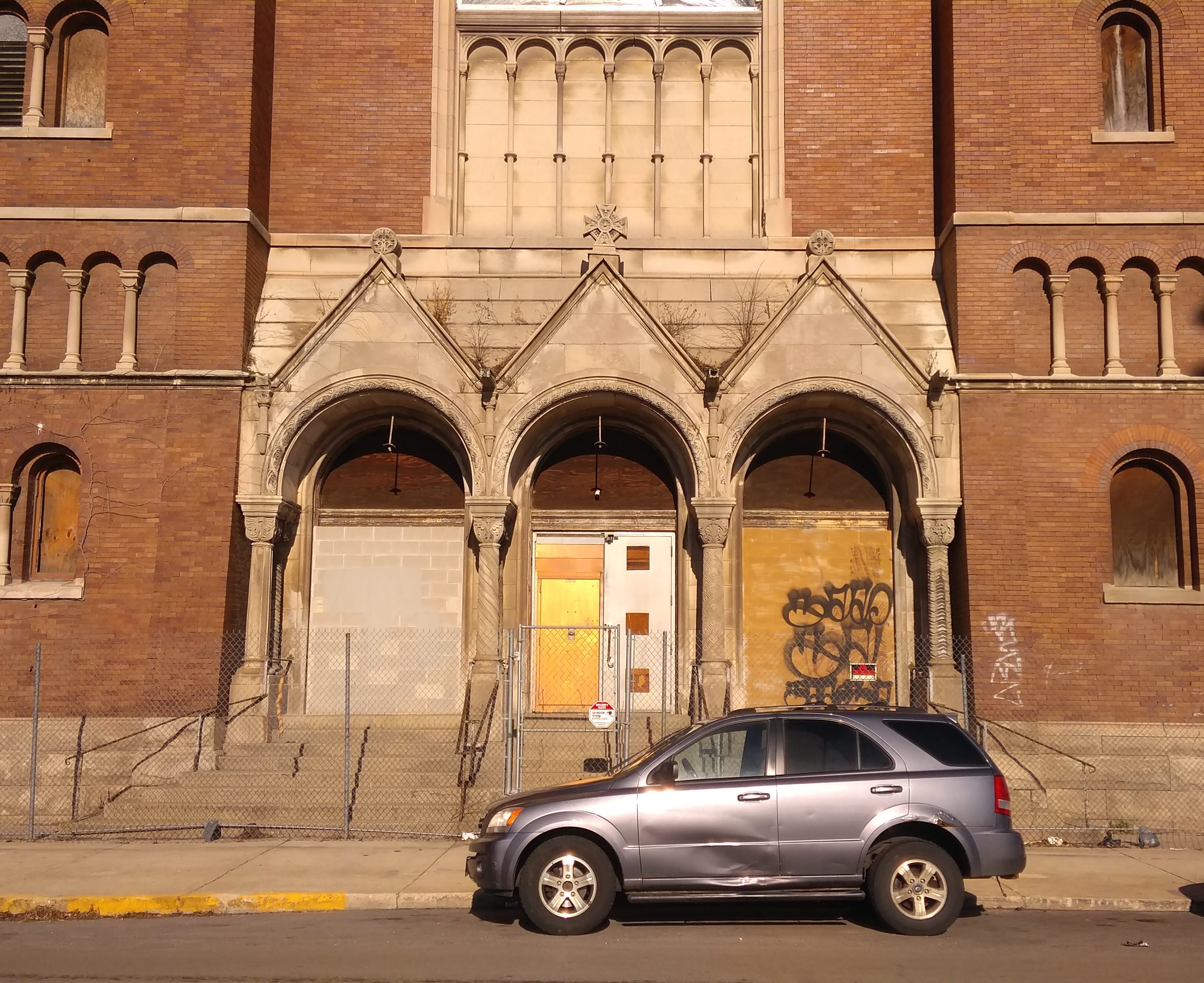
While standing on Noble St. near the hulking St. Boniface, I noticed another church not far to the north. A large-looking structure. When I was looking around Google Maps a few days ahead of my walk, I hadn’t noticed it. But there it was. The church looked to be about five minutes away, so I went.
Soon I was in front of Holy Trinity Church.
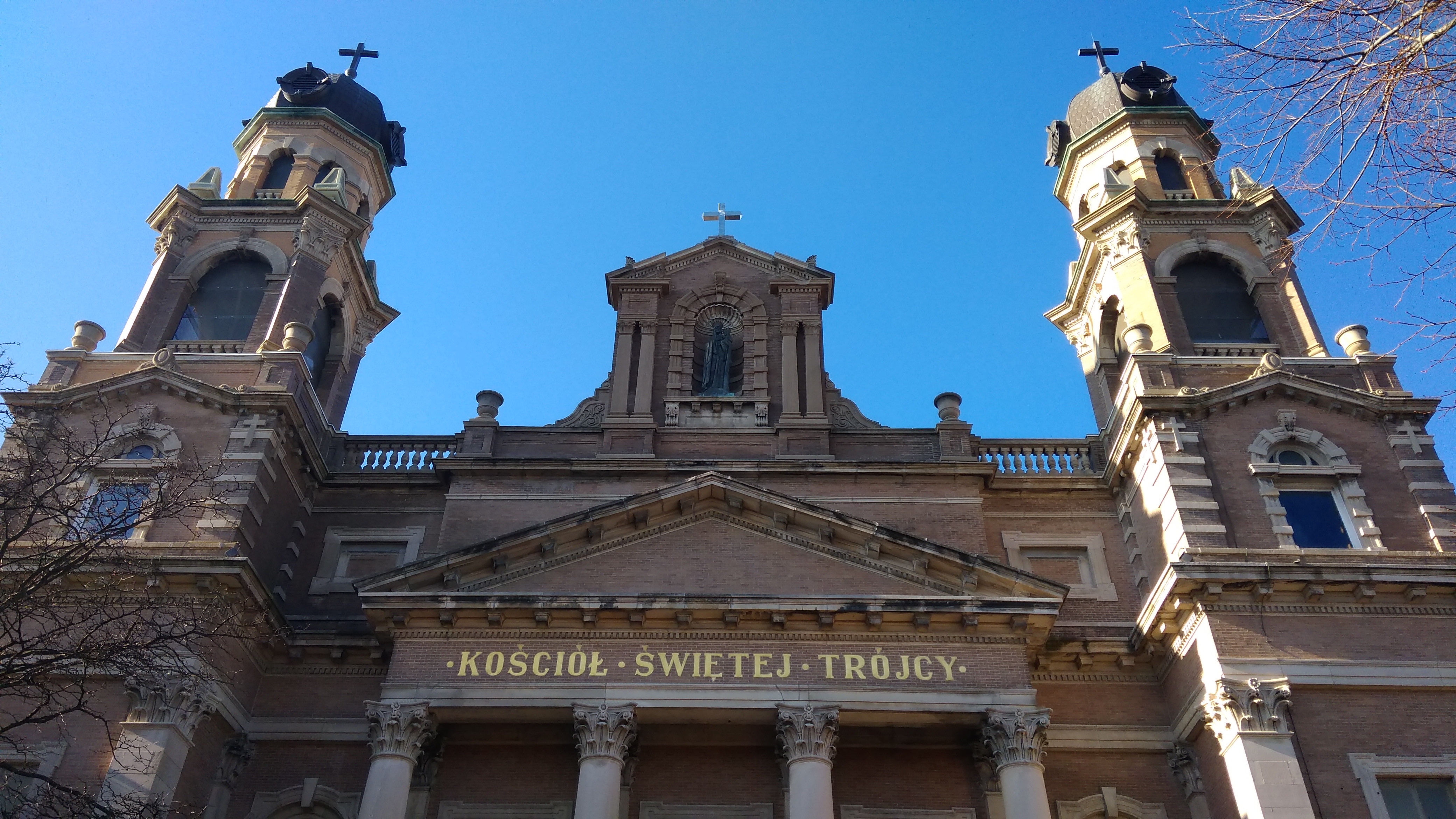
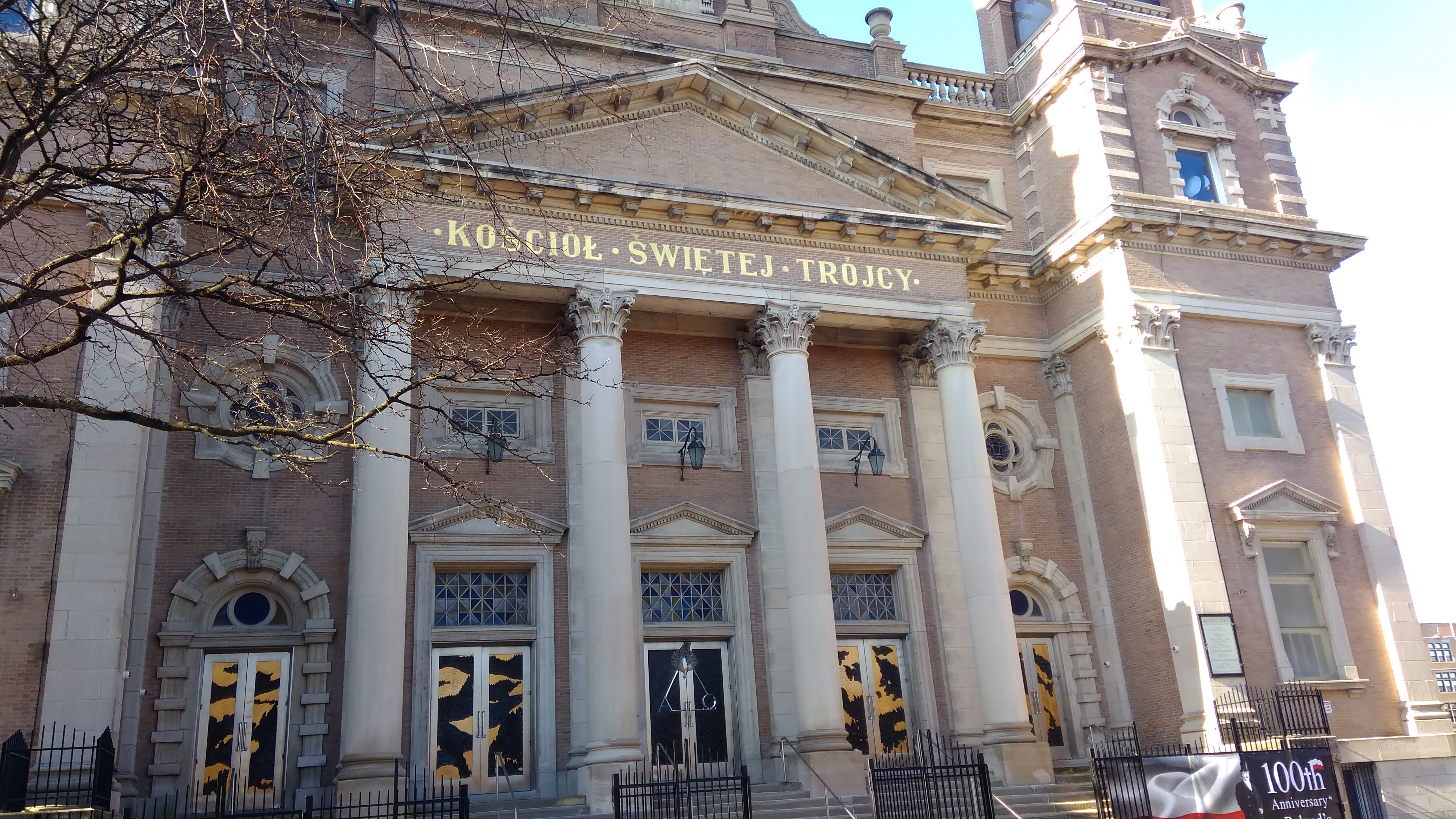 Definitely built for a Polish congregation and still very much a Polish congregation. The church is run by the Society of Christ Fathers for Poles Living Abroad.
Definitely built for a Polish congregation and still very much a Polish congregation. The church is run by the Society of Christ Fathers for Poles Living Abroad.
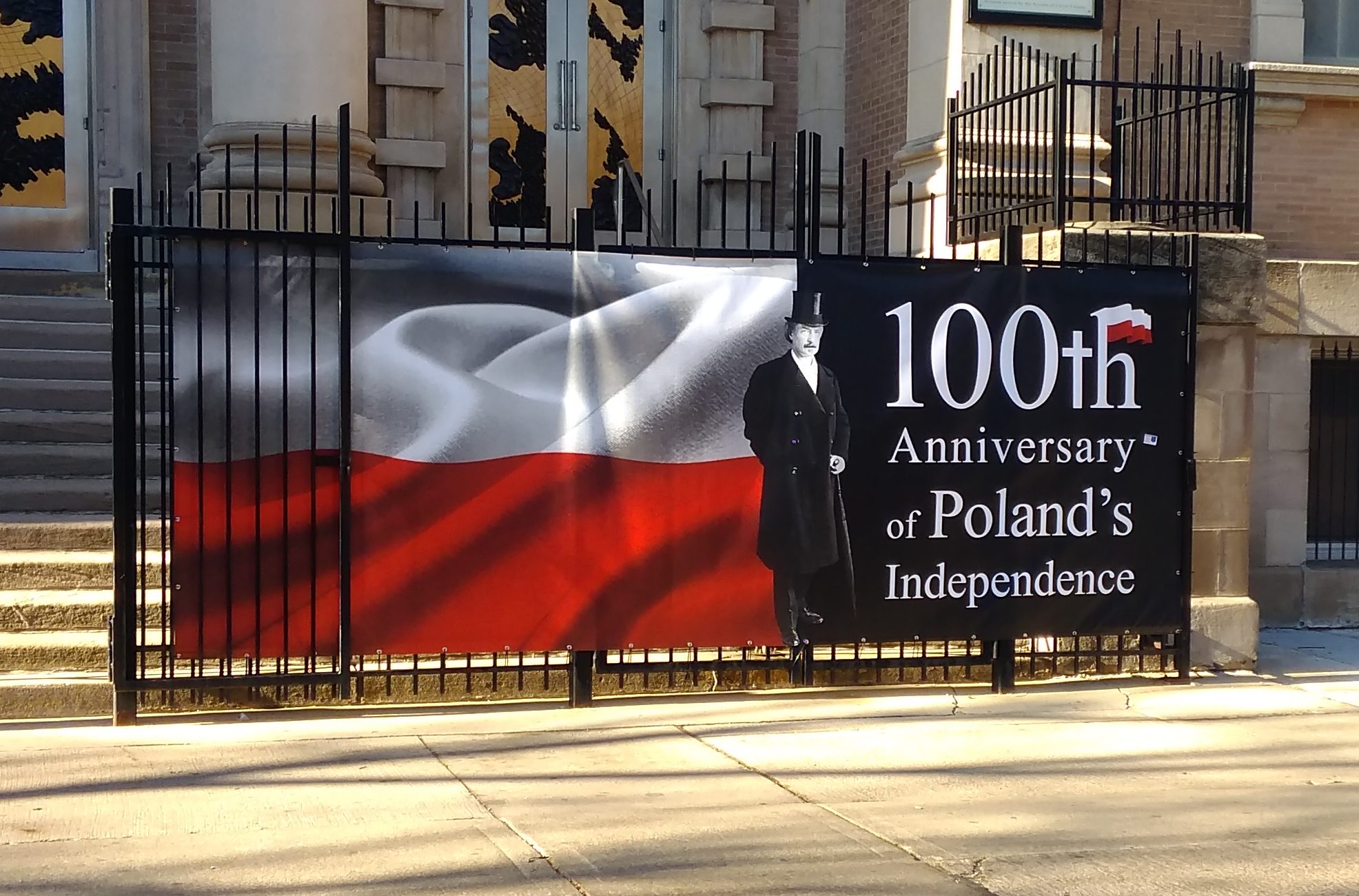 Polish Independence Day is the same as Armistice Day, incidentally. Same day, same year. The war was over and everything was up for grabs, including self-determination for formerly partitioned places.
Polish Independence Day is the same as Armistice Day, incidentally. Same day, same year. The war was over and everything was up for grabs, including self-determination for formerly partitioned places.
Completed in 1906, Holy Trinity’s design is attributed to a Chicago architect named William Krieg, who (according to one source) mostly did more modest buildings in Chicago — a lot of them. Another source calls Krieg “little known” and a manufacturer of terra cotta as well.
I wasn’t expecting the interior to be quite so ornate. I gawked at the column-free space for a while, looking at the murals covering the walls and ceiling, the stained glass, the statues and other ornaments.
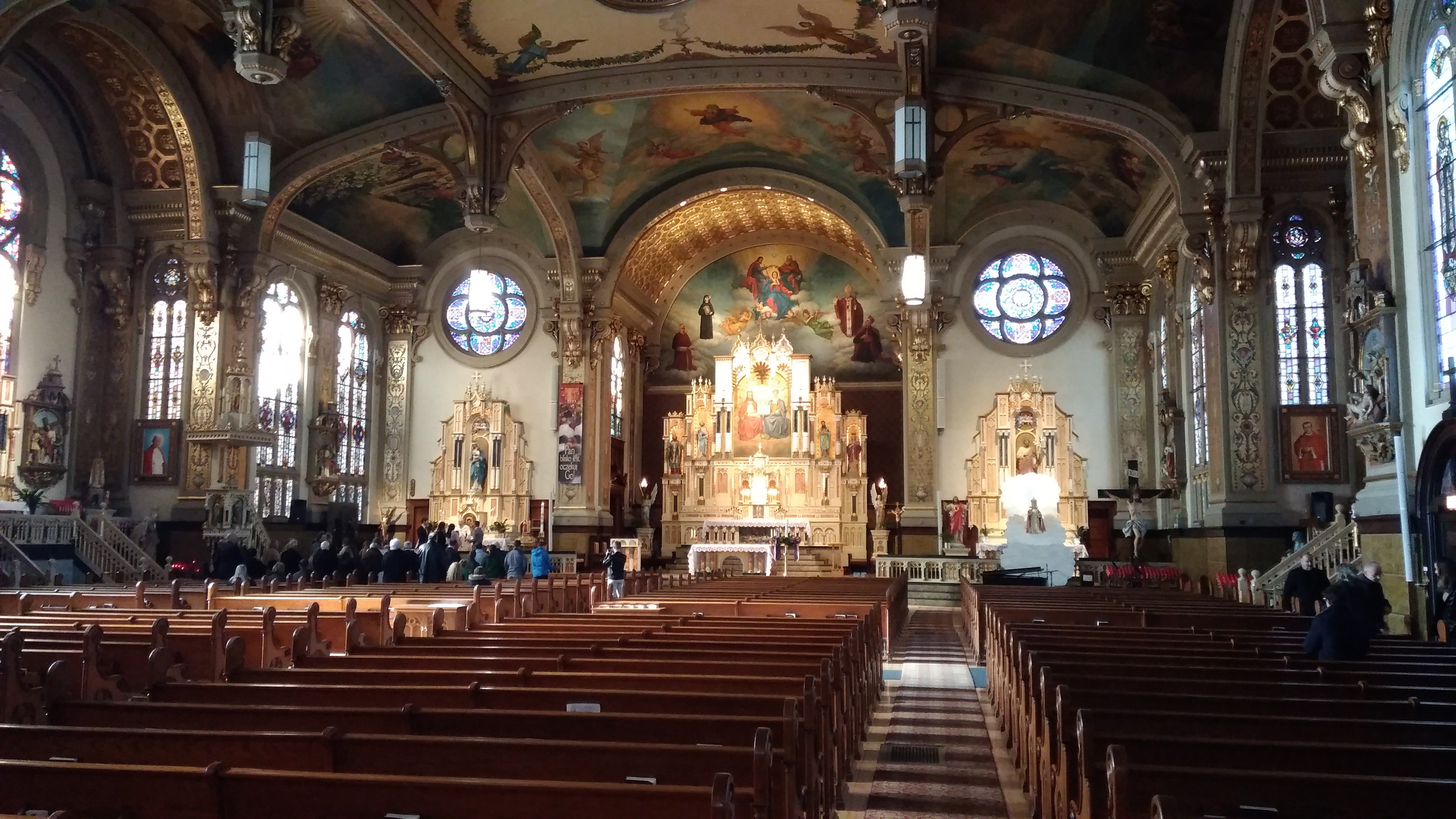 A baptism was in progress, but no mass, so I moved around the sanctuary. Here’s the baptism party in front of the altar.
A baptism was in progress, but no mass, so I moved around the sanctuary. Here’s the baptism party in front of the altar.
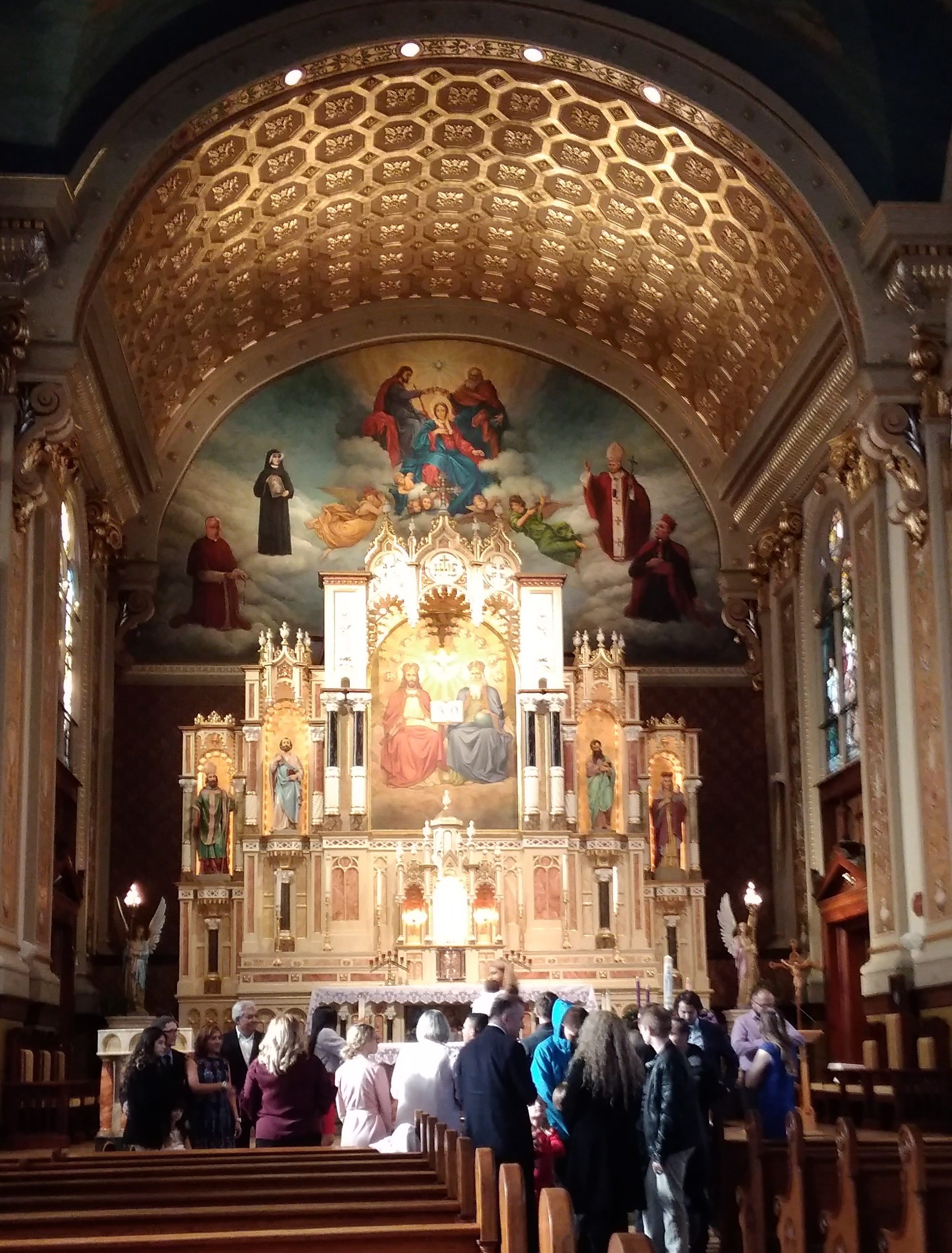 Later, as I read about the church, I can across this bit of information at Wiki about the space underneath. The article calls it “catacombs,” but that seems like a misnomer. Rather, the space is “beneath the area formerly occupied by the lower church, and consist[s] of a winding path lined with niches containing saintly relics…”
Later, as I read about the church, I can across this bit of information at Wiki about the space underneath. The article calls it “catacombs,” but that seems like a misnomer. Rather, the space is “beneath the area formerly occupied by the lower church, and consist[s] of a winding path lined with niches containing saintly relics…”
A little like the space for relics found at St. Josaphat in Milwaukee, perhaps. Intriguing.
 Merry Christmas and Happy New Year to all.
Merry Christmas and Happy New Year to all.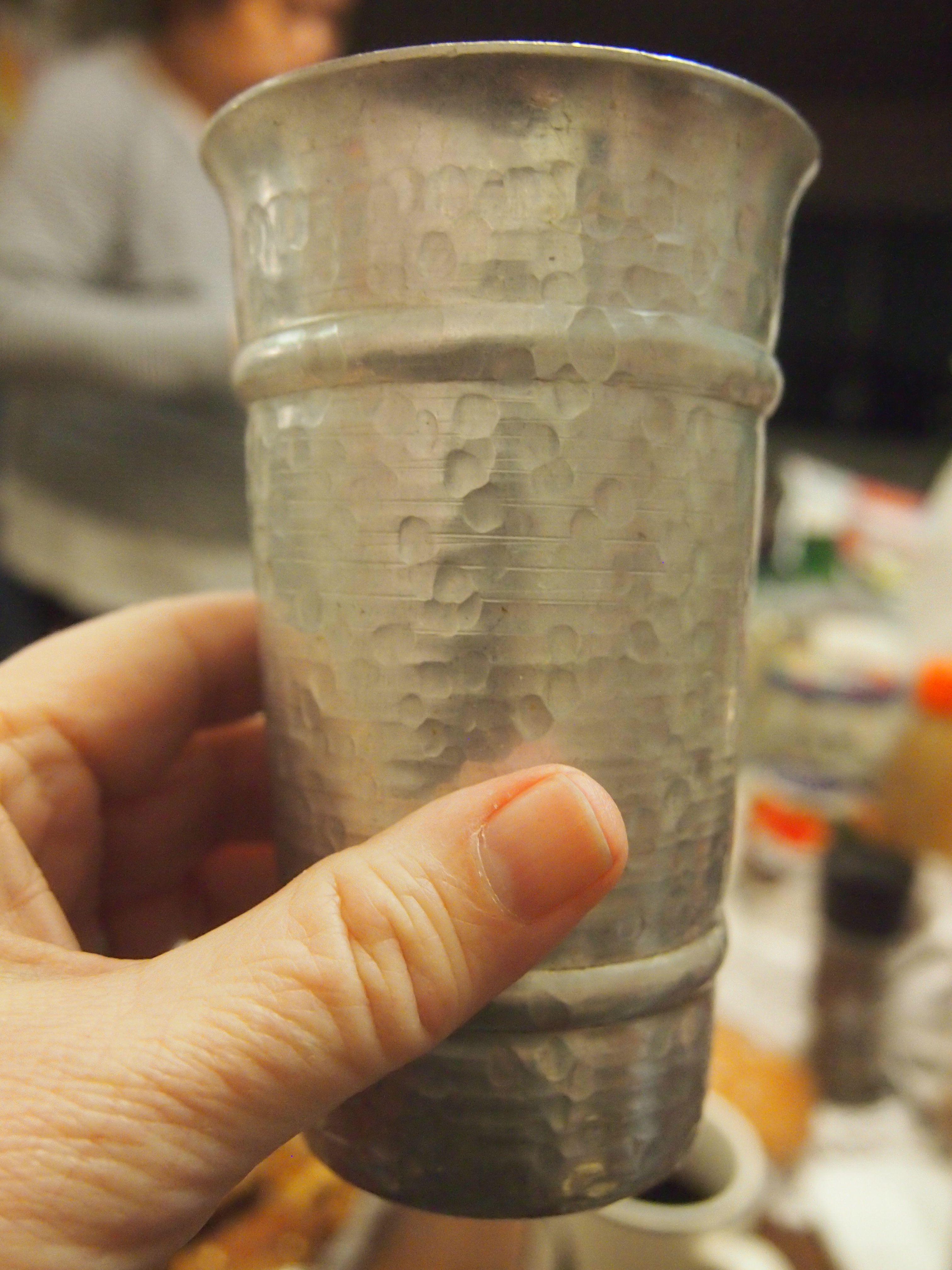
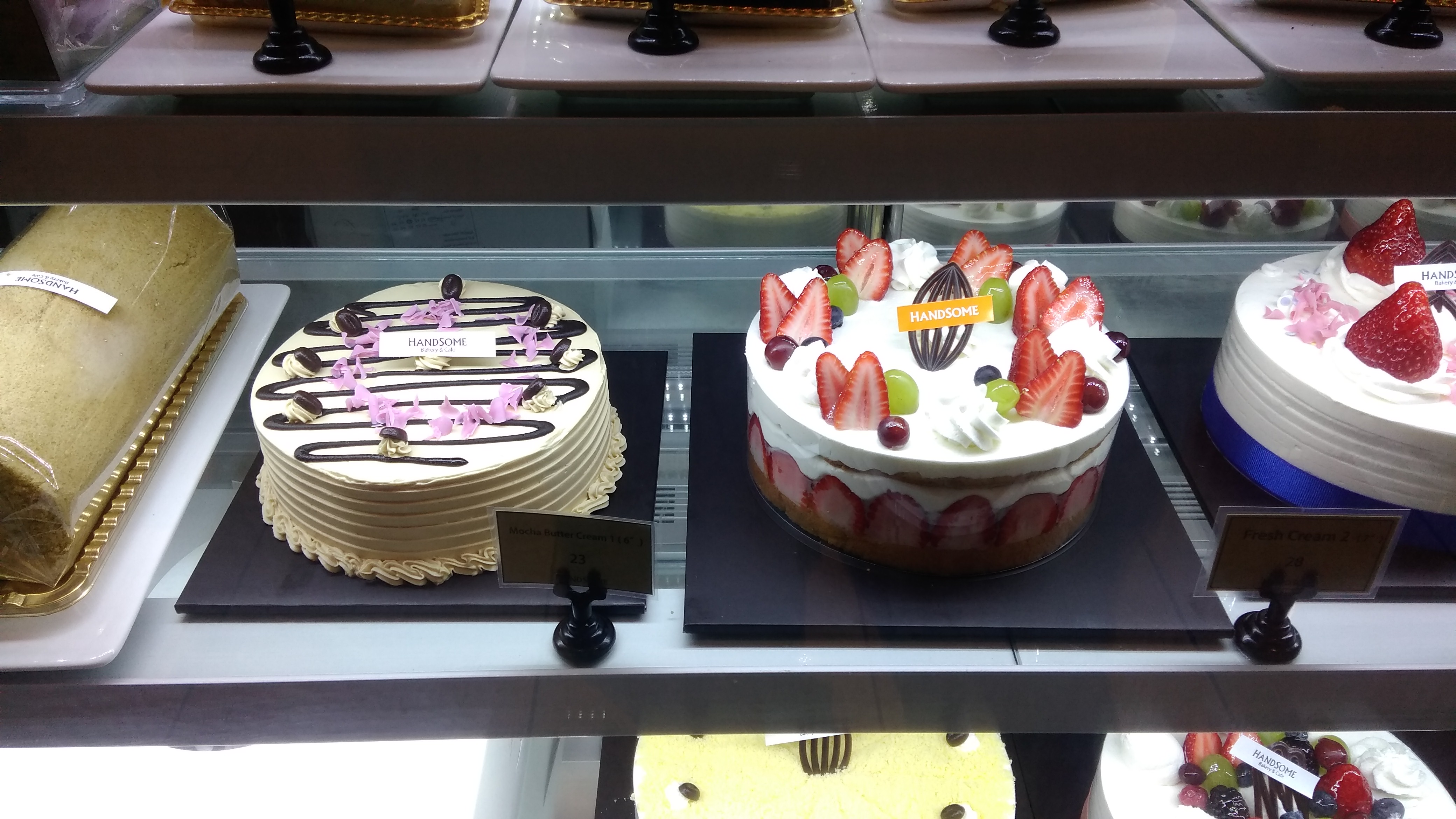
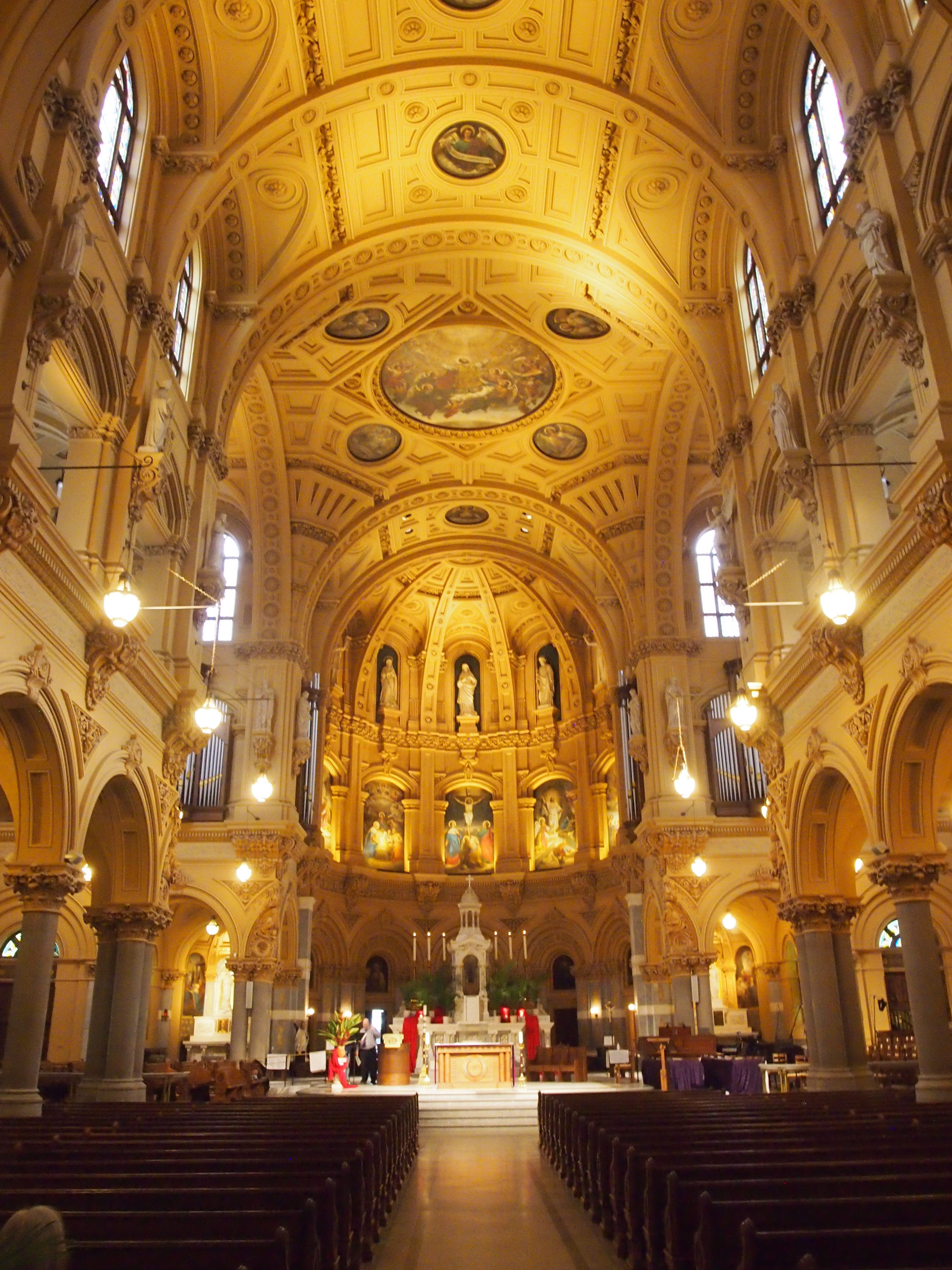
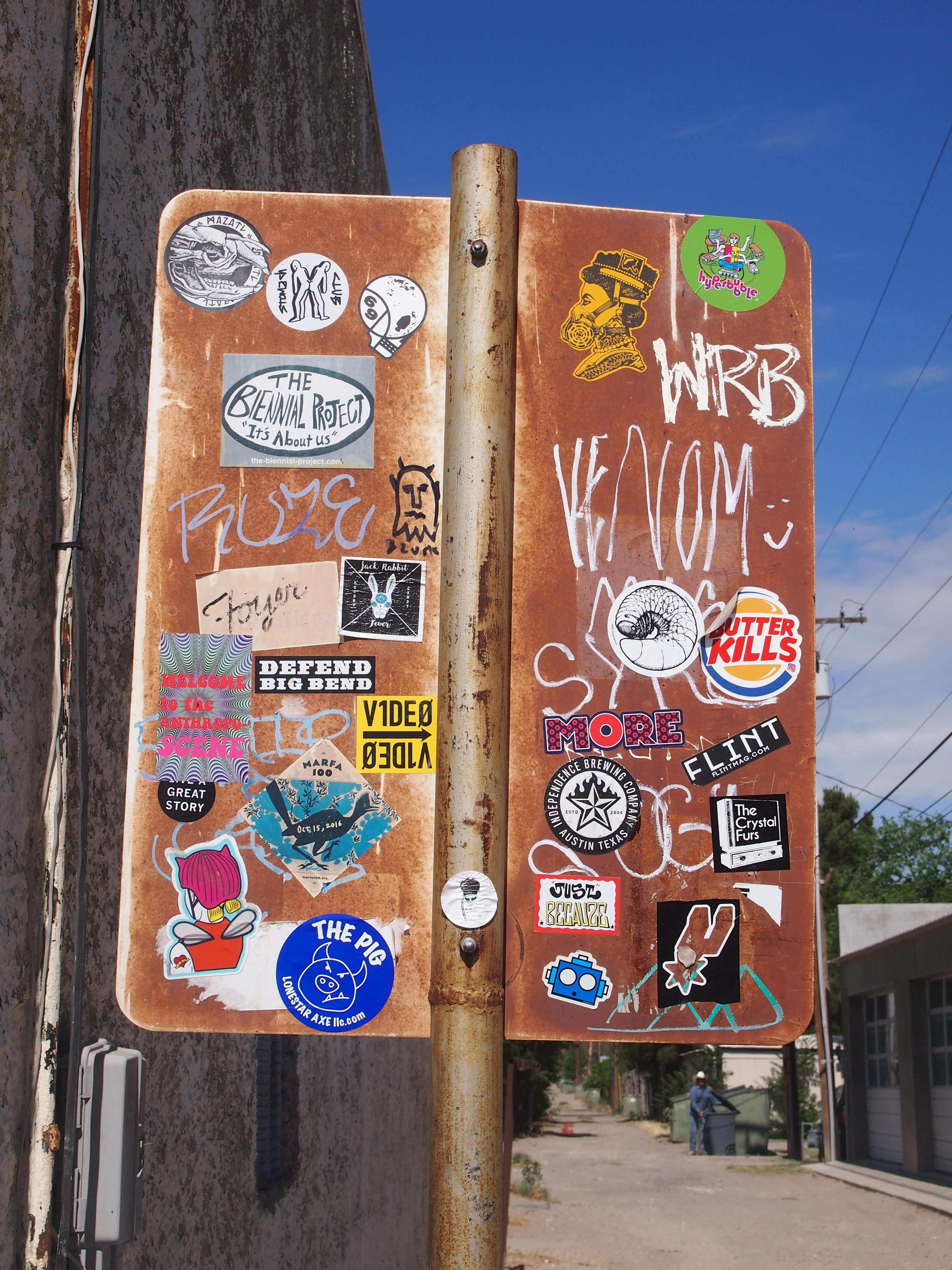

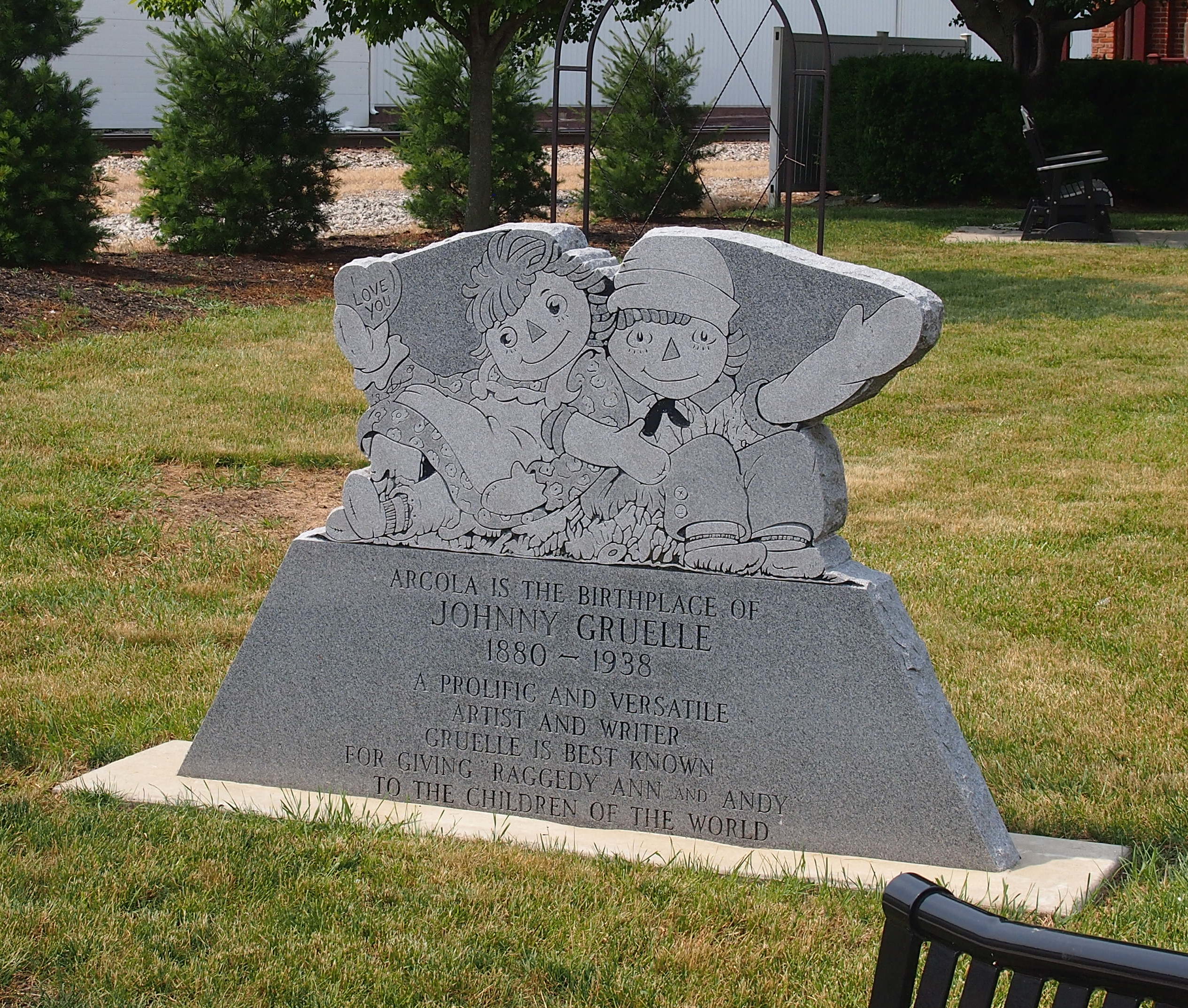
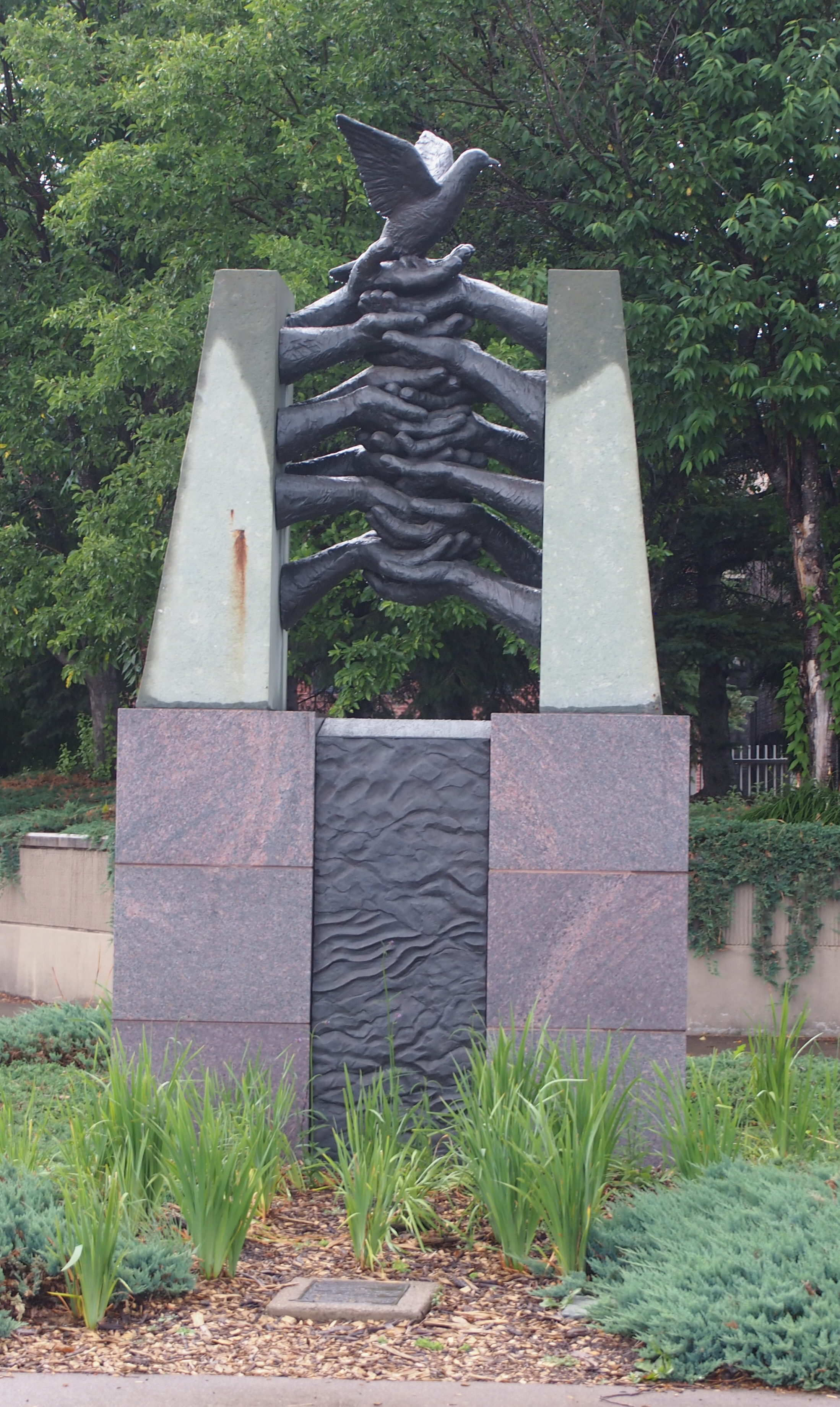
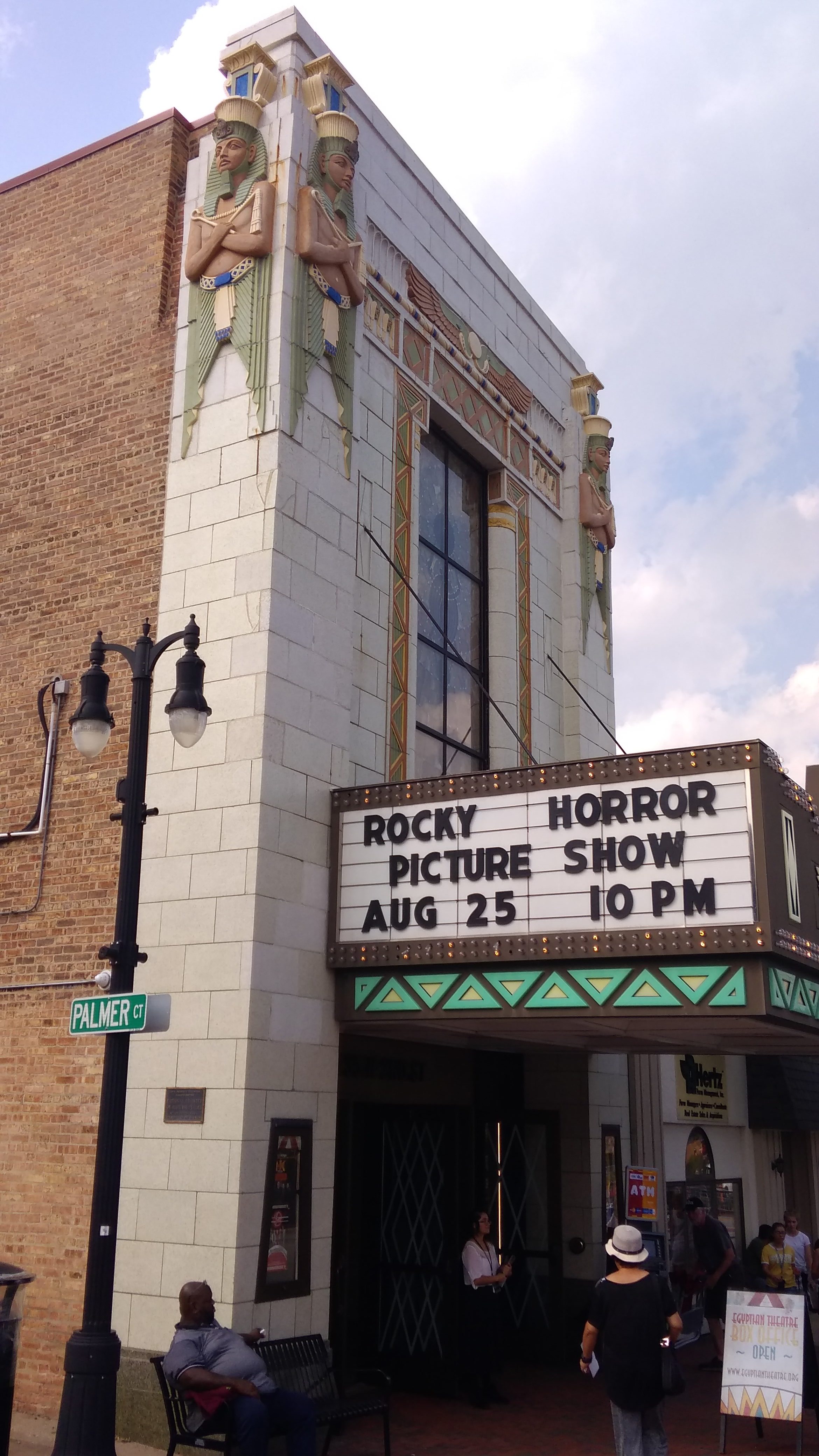


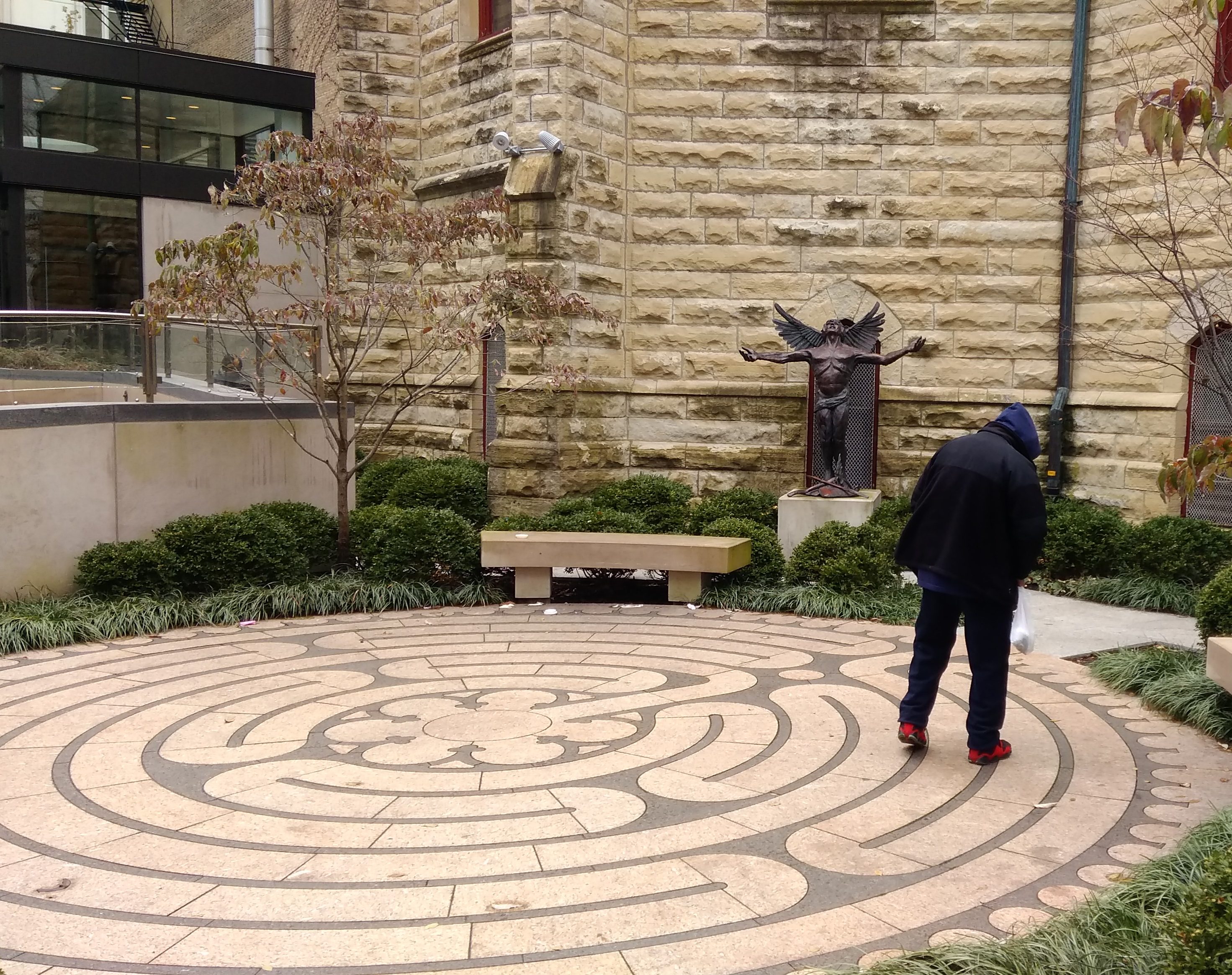
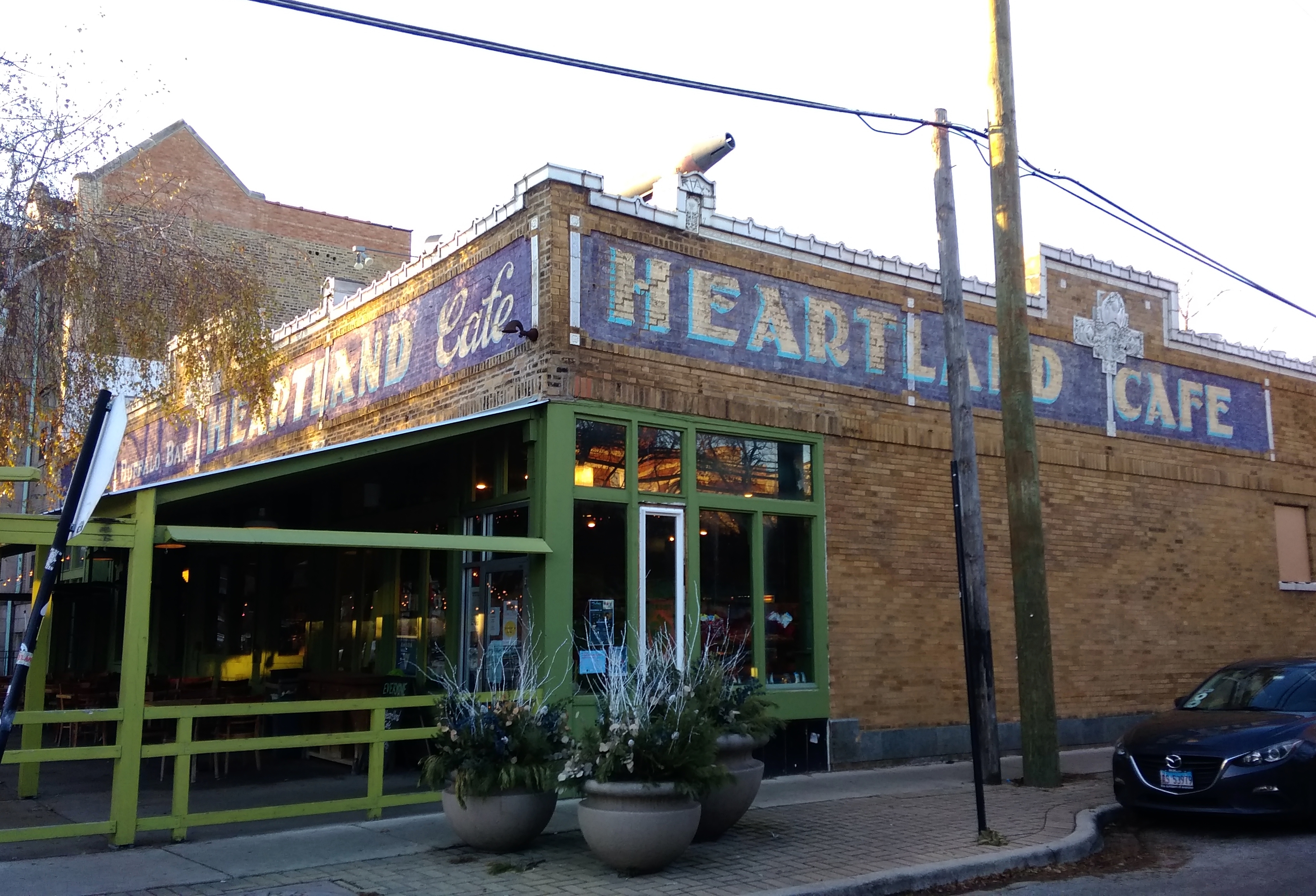 Word is that the Heartland is closing on December 31. That was a surprise, since it’s been around a long time — opening during the last year of the Ford administration.
Word is that the Heartland is closing on December 31. That was a surprise, since it’s been around a long time — opening during the last year of the Ford administration.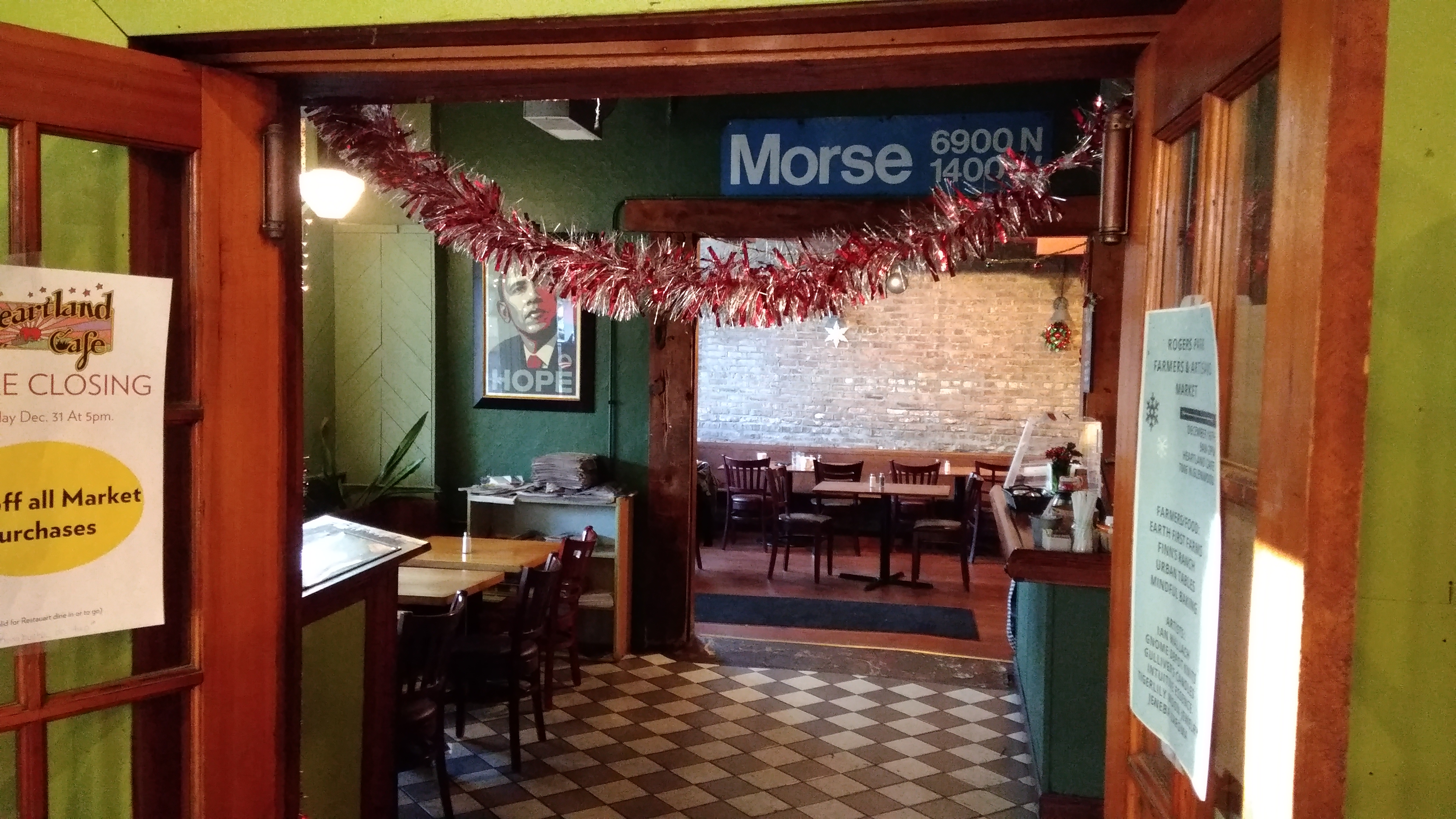 The Hope poster shows more than mere political sympathies, though it does do that. Rather, the Heartland is one of the places that
The Hope poster shows more than mere political sympathies, though it does do that. Rather, the Heartland is one of the places that 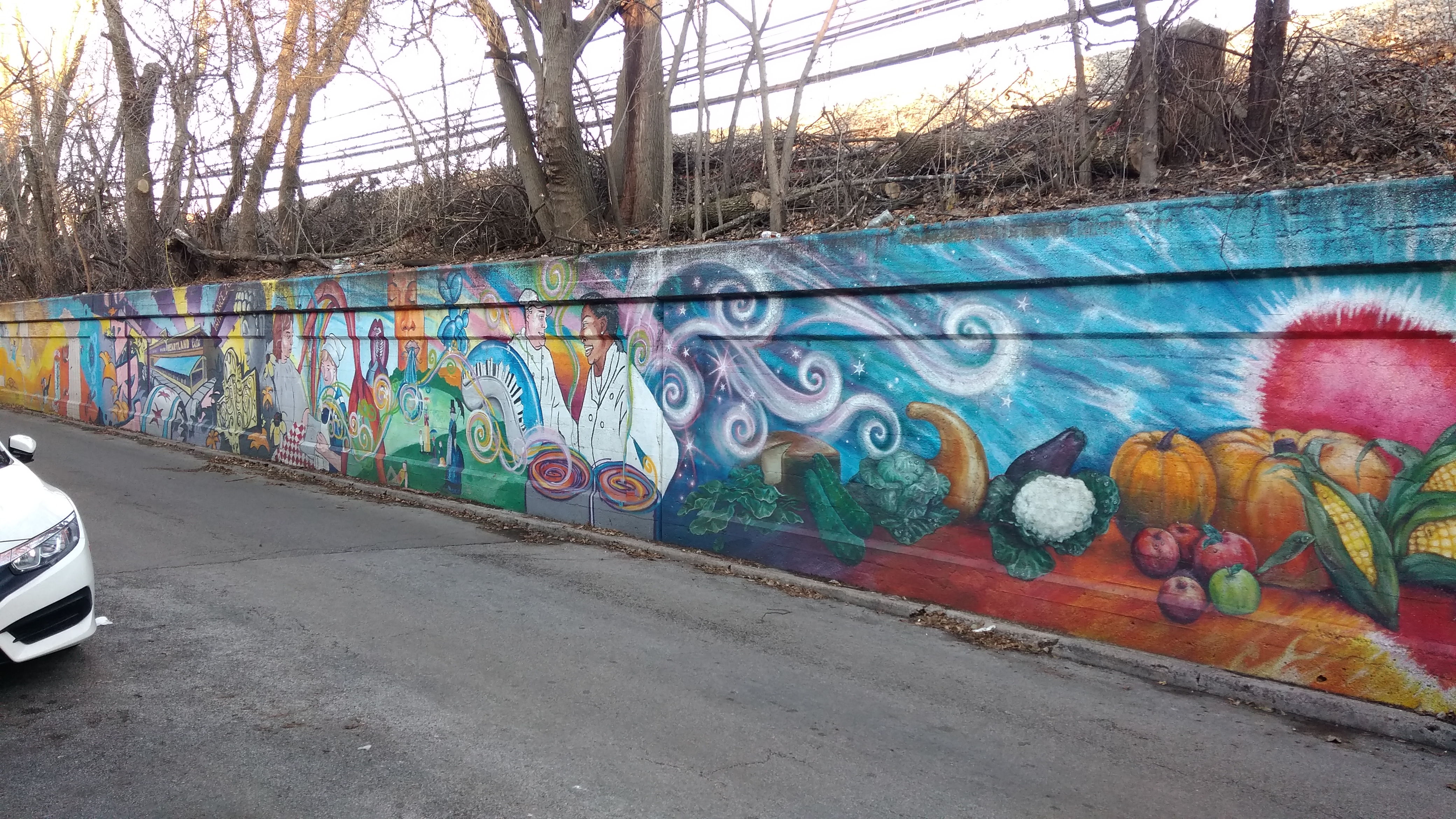
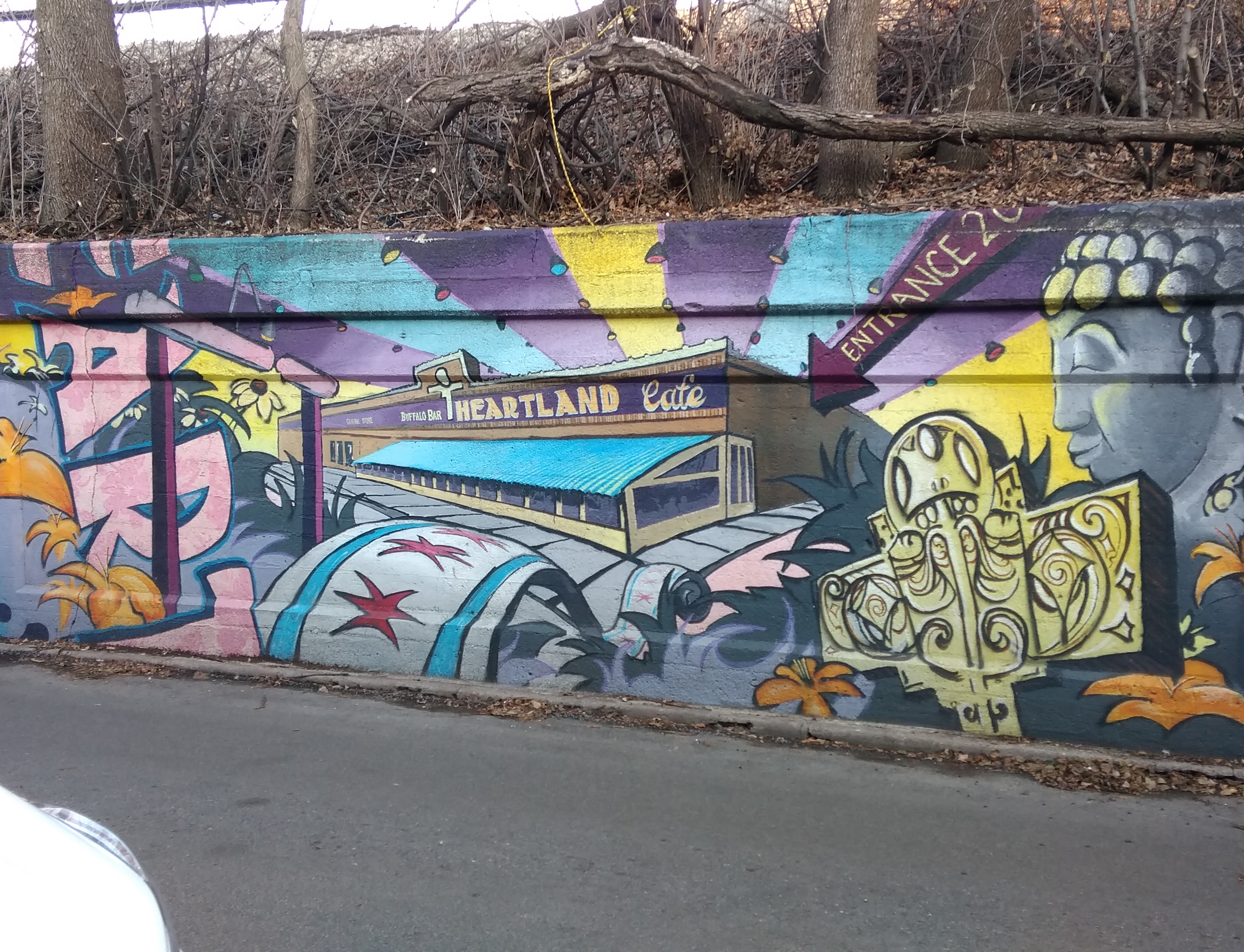





 Polish Independence Day is the same as Armistice Day, incidentally. Same day, same year. The war was over and everything was up for grabs, including self-determination for formerly partitioned places.
Polish Independence Day is the same as Armistice Day, incidentally. Same day, same year. The war was over and everything was up for grabs, including self-determination for formerly partitioned places.

